 Search by Keyword
|
“GET BACK”
(John Lennon – Paul McCartney)
 Everyone who had been involved in the career of The Beatles, including their manager Brian Epstein, their producer, their record labels, their publishers and the group themselves, were interested in their continued success. According to established rules of show business at that time, an artist needed to be in the public eye as much as possible, constant exposure being a key goal in achieving career longevity. Therefore, whenever The Beatles released a single and it was successful, a follow-up needed to be on the market before too long so that fickle record buyers wouldn't be too distracted by another recording artist who gained their attention in the meantime. Everyone who had been involved in the career of The Beatles, including their manager Brian Epstein, their producer, their record labels, their publishers and the group themselves, were interested in their continued success. According to established rules of show business at that time, an artist needed to be in the public eye as much as possible, constant exposure being a key goal in achieving career longevity. Therefore, whenever The Beatles released a single and it was successful, a follow-up needed to be on the market before too long so that fickle record buyers wouldn't be too distracted by another recording artist who gained their attention in the meantime.
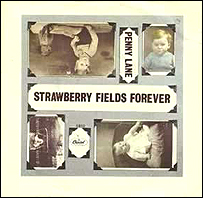 This threat became of particular concern to their manager Brian Epstein during the later months of 1966 and early months of 1967 as The Beatles retired from touring and holed up in the recording studio to produce their extravagant masterpiece “Sgt. Pepper's Lonely Hearts Club Band.” While they were out of the public eye during that time, the new American television group The Monkees gained a foothold in the US, achieving two #1 hit singles and spending a total of 31 weeks in the top spot on the Billboard album chart. “We need a single out, George, fast,” he told producer George Martin at that time. “What have you got? I want the best thing you've got.” What was offered up was the amazing single “Penny Lane / Strawberry Fields Forever,” which showed American audiences, at least for the nine weeks that it was on the pop charts, that The Beatles were still a force to be reckoned with. As it turned out, of course, the June 1967 release of “Sgt. Pepper” set the record straight as to who should ultimately be in the hearts of American teens. When The Monkees TV show went off the air by mid 1968, they had run their course and all eyes were once again on the Fab Four. This threat became of particular concern to their manager Brian Epstein during the later months of 1966 and early months of 1967 as The Beatles retired from touring and holed up in the recording studio to produce their extravagant masterpiece “Sgt. Pepper's Lonely Hearts Club Band.” While they were out of the public eye during that time, the new American television group The Monkees gained a foothold in the US, achieving two #1 hit singles and spending a total of 31 weeks in the top spot on the Billboard album chart. “We need a single out, George, fast,” he told producer George Martin at that time. “What have you got? I want the best thing you've got.” What was offered up was the amazing single “Penny Lane / Strawberry Fields Forever,” which showed American audiences, at least for the nine weeks that it was on the pop charts, that The Beatles were still a force to be reckoned with. As it turned out, of course, the June 1967 release of “Sgt. Pepper” set the record straight as to who should ultimately be in the hearts of American teens. When The Monkees TV show went off the air by mid 1968, they had run their course and all eyes were once again on the Fab Four.
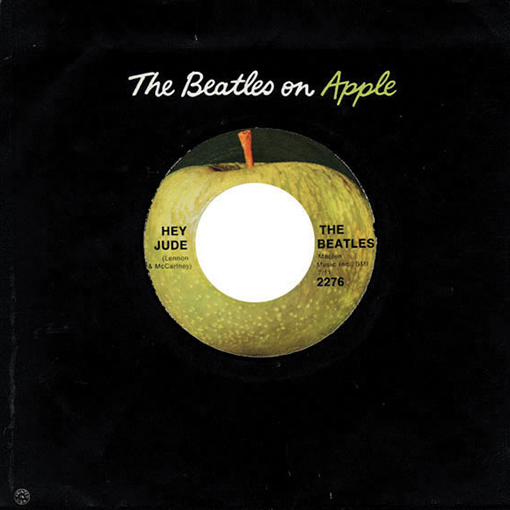 But could something like this happen again? The Beatles thought not or, to be more accurate, they didn't really care. They wanted to do things their own way, and if their next single wasn't ready for release, they wouldn't release it. Their 1968 single “Hey Jude” came out on August 26th of that year and spent an astonishing nine weeks at #1 on the Billboard Hot 100 in the US. Had manager Brian Epstein had still been alive, he probably would have insisted that a new Beatles single be released for the 1968 Christmas season to capitalize on this success. After all, the “White Album” had been released in late November of that year and contained 30 new Beatles songs, many of which would work well as a follow-up to “Hey Jude.” But could something like this happen again? The Beatles thought not or, to be more accurate, they didn't really care. They wanted to do things their own way, and if their next single wasn't ready for release, they wouldn't release it. Their 1968 single “Hey Jude” came out on August 26th of that year and spent an astonishing nine weeks at #1 on the Billboard Hot 100 in the US. Had manager Brian Epstein had still been alive, he probably would have insisted that a new Beatles single be released for the 1968 Christmas season to capitalize on this success. After all, the “White Album” had been released in late November of that year and contained 30 new Beatles songs, many of which would work well as a follow-up to “Hey Jude.”
 However, Brian Epstein was no longer there to make that request, the group themselves now calling all of the shots. “Ob-La-Di, Ob-La-Da” was released as a single from the “White Album” in certain countries but, since George Harrison in particular objected to this becoming an officially released single, this never came to be so in Britian or America. It wasn't until a full eight months and nine days later that The Beatles felt so inclined to release another single, the longest period of time in-between any single releases in their UK and US career. “Get Back,” with “Don't Let Me Down” as the b-side, was eventually officially released on May 5th, 1969 (some sources saying it may have been released slightly earlier). However, Brian Epstein was no longer there to make that request, the group themselves now calling all of the shots. “Ob-La-Di, Ob-La-Da” was released as a single from the “White Album” in certain countries but, since George Harrison in particular objected to this becoming an officially released single, this never came to be so in Britian or America. It wasn't until a full eight months and nine days later that The Beatles felt so inclined to release another single, the longest period of time in-between any single releases in their UK and US career. “Get Back,” with “Don't Let Me Down” as the b-side, was eventually officially released on May 5th, 1969 (some sources saying it may have been released slightly earlier).
 Since nearly eight-and-a-half months had transpired since their last hit single, was there any threat to the career of The Beatles? Not at all! With The Monkees' career being all but non-existent by that time and no one else monopolizing the charts to that degree, the “Get Back” single was highly anticipated and very well received. With this being the first US Beatles single to be released in stereo, it was heard in all its glory and topped the American Billboard Hot 100 for an astonishing five weeks. Since nearly eight-and-a-half months had transpired since their last hit single, was there any threat to the career of The Beatles? Not at all! With The Monkees' career being all but non-existent by that time and no one else monopolizing the charts to that degree, the “Get Back” single was highly anticipated and very well received. With this being the first US Beatles single to be released in stereo, it was heard in all its glory and topped the American Billboard Hot 100 for an astonishing five weeks.
Songwriting History
“We were all sitting in the studio and we made it up out of thin air. We started to write words there and then. When we finished it, we recorded at Apple Studios and made it into a song to rollercoast by.”
 This Paul McCartney statement from the spring of 1969 explained how “Get Back” came to be, this quote appearing in Apple's official press release to introduce the song as the a-side of their first single of that year. Under the bold headline “The Beatles as nature intended,” the press release was featured as a full page ad in the April 26th, 1969 issue of Billboard Magazine to introduce the new single to American fans, the ad describing “Get Back” as also “a pure spring-time rock number.” This quote from Paul may have been the catalyst to Lennon's lyric “He roller coaster” as included in the group's third single of that year, “Come Together.” This Paul McCartney statement from the spring of 1969 explained how “Get Back” came to be, this quote appearing in Apple's official press release to introduce the song as the a-side of their first single of that year. Under the bold headline “The Beatles as nature intended,” the press release was featured as a full page ad in the April 26th, 1969 issue of Billboard Magazine to introduce the new single to American fans, the ad describing “Get Back” as also “a pure spring-time rock number.” This quote from Paul may have been the catalyst to Lennon's lyric “He roller coaster” as included in the group's third single of that year, “Come Together.”
 Although history reveals that Paul's brief thumbnail sketch above about the creation of “Get Back” ended up being more involved than that, it is actually quite accurate. Not too many Beatles songs can be pointed to as a complete fabrication in the studio “out of thin air,” as McCartney described it, and surely no #1 hit single by The Beatles could be described using those words. The composer or composers of most of their songs would always bring in at least a half-finished idea that the others would form into a complete arrangement, George Martin also being instrumental in piecing their ideas together. This happened not to be the case with “Get Back.” Although history reveals that Paul's brief thumbnail sketch above about the creation of “Get Back” ended up being more involved than that, it is actually quite accurate. Not too many Beatles songs can be pointed to as a complete fabrication in the studio “out of thin air,” as McCartney described it, and surely no #1 hit single by The Beatles could be described using those words. The composer or composers of most of their songs would always bring in at least a half-finished idea that the others would form into a complete arrangement, George Martin also being instrumental in piecing their ideas together. This happened not to be the case with “Get Back.”
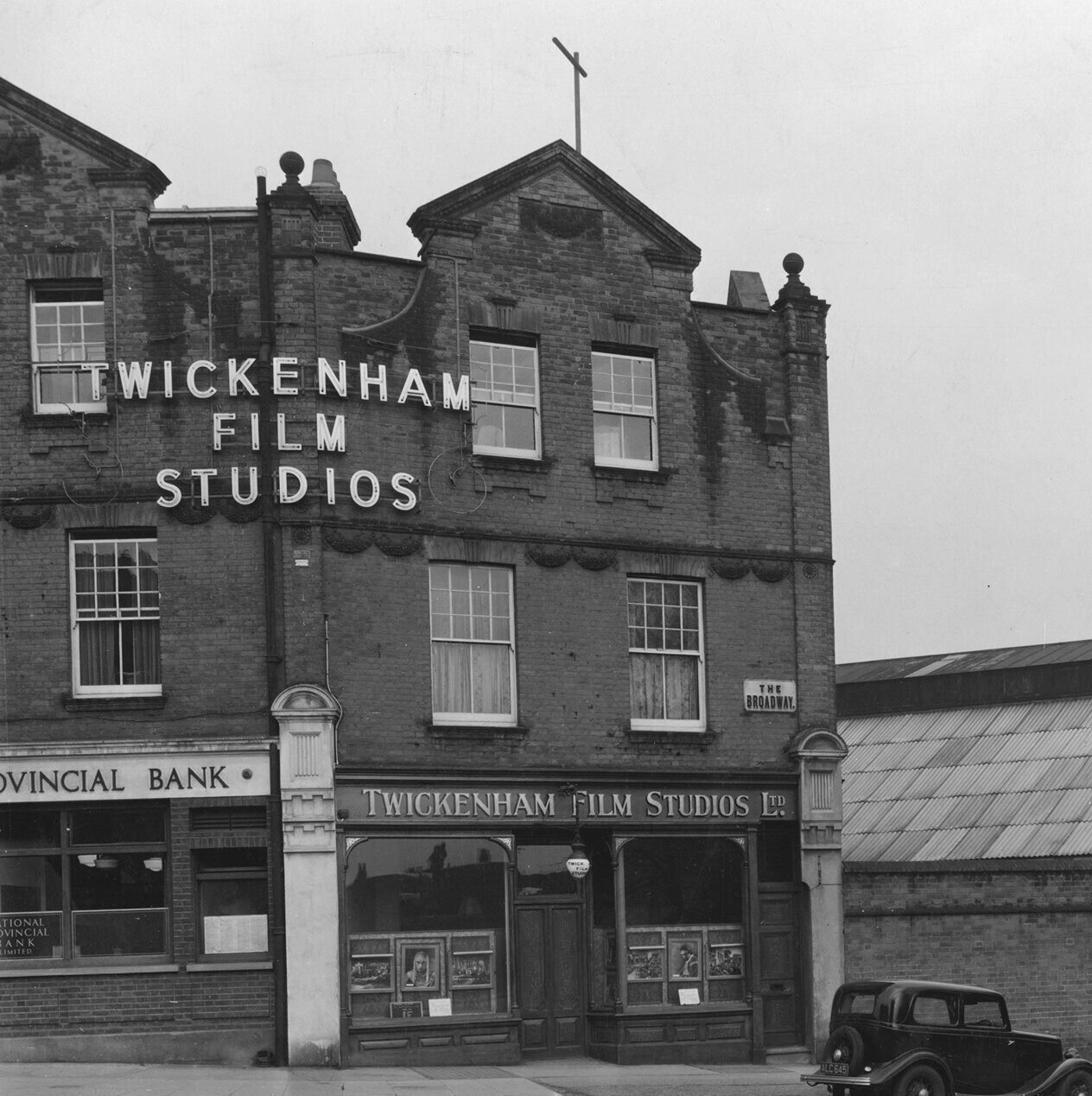 The Beatles had just begun a new album project on January 2nd, 1969, the intention being that the band would have a new album, a film project and, most likely, a concert performance complete by the end of that month. They all began filmed rehearsals for this project at Twickenham Film Studios in London on that day, all four of them bringing in new song ideas that they had recently been developing on their own for possible inclusion. The Beatles had just begun a new album project on January 2nd, 1969, the intention being that the band would have a new album, a film project and, most likely, a concert performance complete by the end of that month. They all began filmed rehearsals for this project at Twickenham Film Studios in London on that day, all four of them bringing in new song ideas that they had recently been developing on their own for possible inclusion.
 "I have never composed on the bass. Never. Not to this day!" This quote from Paul's 2021 book "The Lyrics" is found to be false. Four days into the new album project, on January 7th, 1969, Paul began strumming out a rhythm on his Hofner bass guitar at Twickenham Studios without any real aim or goal other than to get a good feel for a possible song. This actual event, the only time one can witness a Beatles song being written from scratch, can be seen in Peter Jackson's 2021 documentary "Get Back." Paul mumbled nonsense and changed chords haphazardly until striking upon something that sounded good to him. Lyrical phrases then started to materialize for Paul, such as the chorus's “get back to where you once belonged,” which Ringo began singing with him. Inspiration went even further on that day as the structure of a song began to develop, which included verses and choruses and even more lyrical ideas for one of the verses. John wasn't present at this time but, in the next number of days, Lennon also contributed lyrical ideas and, by January 23rd, 1969, a complete song was fully formed. "I have never composed on the bass. Never. Not to this day!" This quote from Paul's 2021 book "The Lyrics" is found to be false. Four days into the new album project, on January 7th, 1969, Paul began strumming out a rhythm on his Hofner bass guitar at Twickenham Studios without any real aim or goal other than to get a good feel for a possible song. This actual event, the only time one can witness a Beatles song being written from scratch, can be seen in Peter Jackson's 2021 documentary "Get Back." Paul mumbled nonsense and changed chords haphazardly until striking upon something that sounded good to him. Lyrical phrases then started to materialize for Paul, such as the chorus's “get back to where you once belonged,” which Ringo began singing with him. Inspiration went even further on that day as the structure of a song began to develop, which included verses and choruses and even more lyrical ideas for one of the verses. John wasn't present at this time but, in the next number of days, Lennon also contributed lyrical ideas and, by January 23rd, 1969, a complete song was fully formed.
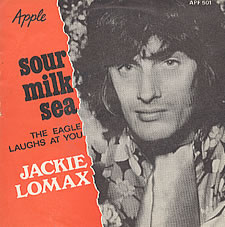 Paul's initial lyrical inspiration came from the George Harrison song “Sour Milk Sea” that had recently been recorded by Apple recording artist Jackie Lomax on June 24th, 1968. Paul was quite familiar with this song because of his playing bass on the recording along with George, Ringo and Eric Clapton. A prominent lyric in the song's chorus is “get back to where you should be,” this line popping into Paul's mind on January 7th, 1969 while first developing “Get Back” at Twickenham Studios. Paul acknowledged this inspiration on that day by blurting out “C'mon Jackie!” during one of the renditions he was hashing out with George and Ringo, even trying his hand at a Jackie Lomax impersonation. Paul's initial lyrical inspiration came from the George Harrison song “Sour Milk Sea” that had recently been recorded by Apple recording artist Jackie Lomax on June 24th, 1968. Paul was quite familiar with this song because of his playing bass on the recording along with George, Ringo and Eric Clapton. A prominent lyric in the song's chorus is “get back to where you should be,” this line popping into Paul's mind on January 7th, 1969 while first developing “Get Back” at Twickenham Studios. Paul acknowledged this inspiration on that day by blurting out “C'mon Jackie!” during one of the renditions he was hashing out with George and Ringo, even trying his hand at a Jackie Lomax impersonation.
 Paul and John did interject other lyrics as the song was developing that stem from various sources. As they were both prone to do, news items read in the newspaper at the time began appearing in the lyrics. Author Barry Miles, as quoted in the book “Many Years From Now,” stated that lyrical inspiration for this song included “the plight of Kenyan Asians who were rushing to get into Britain before passage of the Commonwealth Immigration Bill, which would've denied them entry. Intended as a parody on racist attitudes, Paul's (proposed lyric) 'Don't dig no Pakistani taking all the people's jobs!' was dropped early on as being too easily misconstrued. The rest of the third verse went through various changes, ending up...'Meanwhile back at home too many Pakistanis / living in a council flat / Candidate MacMillan, tell me what your plan is / Won't you tell me where it's at.'” This proposed third verse was officially dropped by Paul for this “protest song,” as he referred to it, on January 23rd, 1969, the two-verse, three-solo structure being decided upon on that day. Paul wanted to retain this verse because he liked the scanning of the word “Pakistani,” but relented so as not to upset any listeners. Paul and John did interject other lyrics as the song was developing that stem from various sources. As they were both prone to do, news items read in the newspaper at the time began appearing in the lyrics. Author Barry Miles, as quoted in the book “Many Years From Now,” stated that lyrical inspiration for this song included “the plight of Kenyan Asians who were rushing to get into Britain before passage of the Commonwealth Immigration Bill, which would've denied them entry. Intended as a parody on racist attitudes, Paul's (proposed lyric) 'Don't dig no Pakistani taking all the people's jobs!' was dropped early on as being too easily misconstrued. The rest of the third verse went through various changes, ending up...'Meanwhile back at home too many Pakistanis / living in a council flat / Candidate MacMillan, tell me what your plan is / Won't you tell me where it's at.'” This proposed third verse was officially dropped by Paul for this “protest song,” as he referred to it, on January 23rd, 1969, the two-verse, three-solo structure being decided upon on that day. Paul wanted to retain this verse because he liked the scanning of the word “Pakistani,” but relented so as not to upset any listeners.
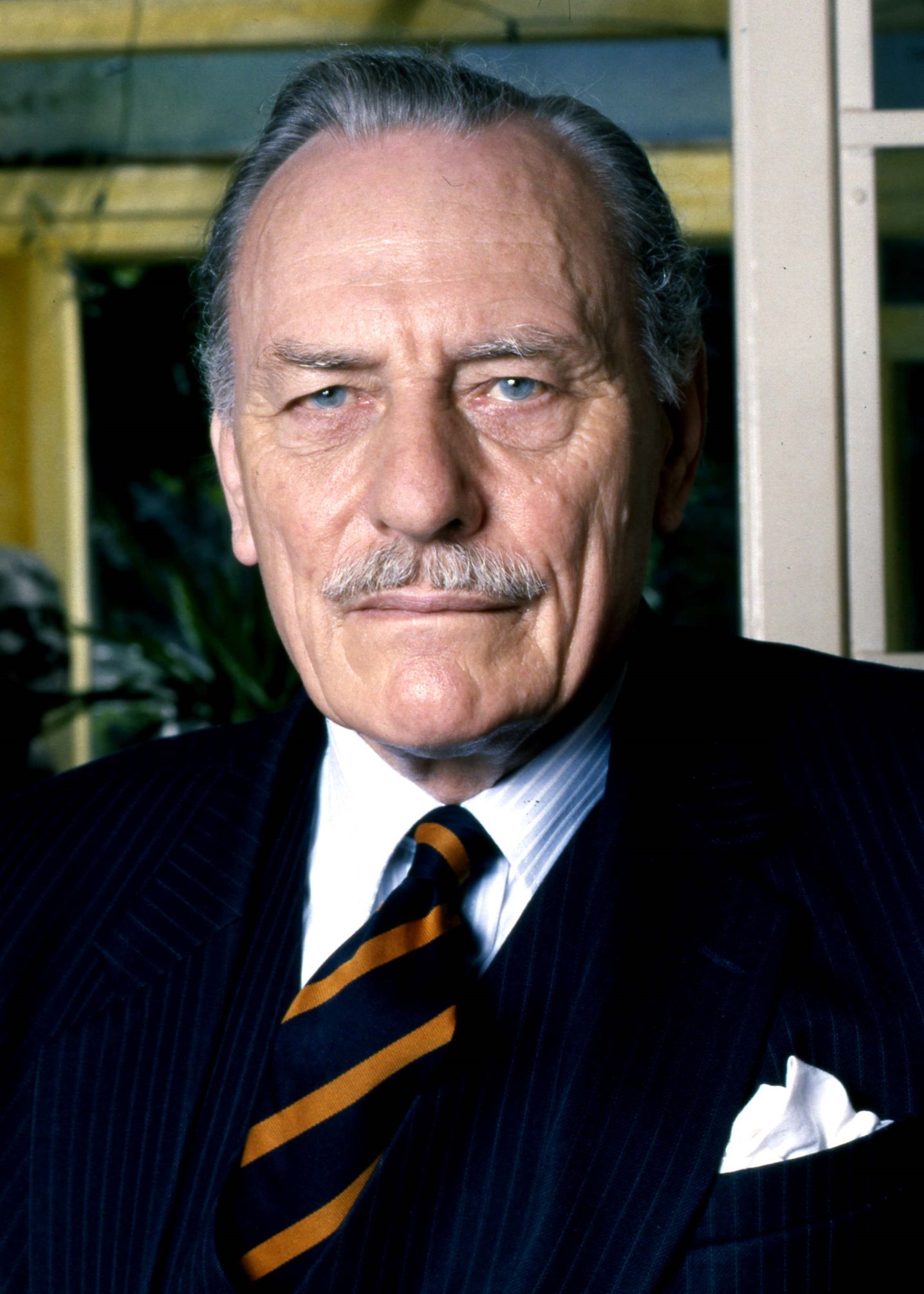 Barry Miles explains: “Meanwhile the fascist National Front was beating up Pakistanis on the streets and the right-wing politician Enoch Powell predicted race war and 'rivers of blood' so, to avoid any possibility of inflaming the situation, the entire verse was ultimately dropped.” Although this subject matter was thought by Paul and John to fit the premise of the original ad lib lyric “get back to where you once belonged,” the wise choice was made on January 9th, 1969 to replace this with lyrics that introduced fictional characters such as JoJo Lemmon (or Clark or Jackson) and Loretta Marsh, this eventually being replaced with "Sweet Loretta Martin." These newer lyrical developments, as well as Ringo's "blast from the past" suggestion as a rhyme for "knew he couldn't last," can also be witnessed by viewing Peter Jackson's 2021 "Get Back" documentary. Barry Miles explains: “Meanwhile the fascist National Front was beating up Pakistanis on the streets and the right-wing politician Enoch Powell predicted race war and 'rivers of blood' so, to avoid any possibility of inflaming the situation, the entire verse was ultimately dropped.” Although this subject matter was thought by Paul and John to fit the premise of the original ad lib lyric “get back to where you once belonged,” the wise choice was made on January 9th, 1969 to replace this with lyrics that introduced fictional characters such as JoJo Lemmon (or Clark or Jackson) and Loretta Marsh, this eventually being replaced with "Sweet Loretta Martin." These newer lyrical developments, as well as Ringo's "blast from the past" suggestion as a rhyme for "knew he couldn't last," can also be witnessed by viewing Peter Jackson's 2021 "Get Back" documentary.
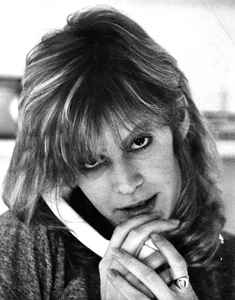 “These words were not racist at all,” Paul explained in the 1997 book “Many Years From Now” “They were antiracist. If there was any group that was not racist it was The Beatles. Many people have since claimed to be the JoJo and they're not, let me put that straight! I had no particular person in mind. Again it was a fictional character, half man, half woman, all very ambiguous. I often left things ambiguous, I liked doing that in my songs." Also of some concern was the lyric about JoJo leaving his home in Tucson, Arizona in order to obtain "California grass," this being established as purchasing property in relocating from Arizona and not in reference to pot as a lot of people thought. After all, "grass" rhymes with "last" much better than "land" or "property" would. As for McCartney's choice of "Tucson, Arizona," Apple's receptionist and secretary Chris O'Dell (whom George wrote about in his song "Miss O'Dell") happened to have been raised there, speculation pointing to this being his inspiration for this choice of location in "Get Back." “These words were not racist at all,” Paul explained in the 1997 book “Many Years From Now” “They were antiracist. If there was any group that was not racist it was The Beatles. Many people have since claimed to be the JoJo and they're not, let me put that straight! I had no particular person in mind. Again it was a fictional character, half man, half woman, all very ambiguous. I often left things ambiguous, I liked doing that in my songs." Also of some concern was the lyric about JoJo leaving his home in Tucson, Arizona in order to obtain "California grass," this being established as purchasing property in relocating from Arizona and not in reference to pot as a lot of people thought. After all, "grass" rhymes with "last" much better than "land" or "property" would. As for McCartney's choice of "Tucson, Arizona," Apple's receptionist and secretary Chris O'Dell (whom George wrote about in his song "Miss O'Dell") happened to have been raised there, speculation pointing to this being his inspiration for this choice of location in "Get Back."
 Paul takes a retrospective view of this song in his 2021 book "The Lyrics," explaining: "The thing about The Beatles was, we were a damn good little band. The four of us just knew how to fall in with each other and play. That was our real strength. So that made it all the more sorrowful to think that our breaking up was almost inevitable. So there is a wistful aspect to the song 'Get Back.' There is the idea that you should get back to your roots, that The Beatles should get back to how we were in Liverpool. And the roots are embodied in the style of the song, which is straight-up rock and roll. Because that was definitely what I thought we should do when we broke up - that we should 'get back to where we once belonged' and become a little band again. We should just play and do the occasional little gig." Paul takes a retrospective view of this song in his 2021 book "The Lyrics," explaining: "The thing about The Beatles was, we were a damn good little band. The four of us just knew how to fall in with each other and play. That was our real strength. So that made it all the more sorrowful to think that our breaking up was almost inevitable. So there is a wistful aspect to the song 'Get Back.' There is the idea that you should get back to your roots, that The Beatles should get back to how we were in Liverpool. And the roots are embodied in the style of the song, which is straight-up rock and roll. Because that was definitely what I thought we should do when we broke up - that we should 'get back to where we once belonged' and become a little band again. We should just play and do the occasional little gig."
 "The others all laughed at that - quite understandably - because by then it was not really a practical solution. John had just met Yoko, and he clearly needed to escape to a new place, whereas I was saying we should escape to an old place. Reviving the old Beatles just wasn't on the cards. It too late to be recommending that we not forget who we were and where we once were from. If my dream at the time really was to get back to where we once belonged, John's dream was to go beyond where we once belonged, to go somewhere we didn't yet belong." "The others all laughed at that - quite understandably - because by then it was not really a practical solution. John had just met Yoko, and he clearly needed to escape to a new place, whereas I was saying we should escape to an old place. Reviving the old Beatles just wasn't on the cards. It too late to be recommending that we not forget who we were and where we once were from. If my dream at the time really was to get back to where we once belonged, John's dream was to go beyond where we once belonged, to go somewhere we didn't yet belong."
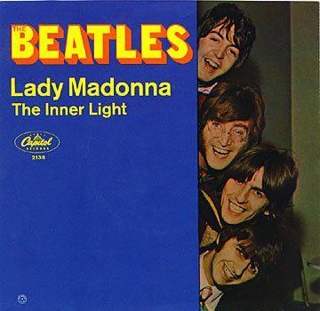 John downplayed his involvement with contributing anything to the composing of “Get Back” during his 1980 interview with Playboy Magazine, also adding some interesting observations. After he claimed that it was written entirely by Paul, he remarked: “That's a better version of 'Lady Madonna.' It's a potboiler record. I think there is some underlying thing about Yoko in there. Every time Paul would sing the line 'Get back to where you once belonged,' he'd look at Yoko. Maybe he'll say I'm paranoid. You know, he can say, 'I'm a normal family man, these two are freaks.' That'll leave him a chance to say that one.” John downplayed his involvement with contributing anything to the composing of “Get Back” during his 1980 interview with Playboy Magazine, also adding some interesting observations. After he claimed that it was written entirely by Paul, he remarked: “That's a better version of 'Lady Madonna.' It's a potboiler record. I think there is some underlying thing about Yoko in there. Every time Paul would sing the line 'Get back to where you once belonged,' he'd look at Yoko. Maybe he'll say I'm paranoid. You know, he can say, 'I'm a normal family man, these two are freaks.' That'll leave him a chance to say that one.”
Recording History
 As stated above, Paul began experimenting with the germ of an idea that resulted in the song “Get Back” on January 7th, 1969, while The Beatles were rehearsing for their latest movie/album project at Twickenham Film Studios. This session began around 11 am, Paul, George and Ringo being present with John arriving a little later. Before the others arrived, Paul sat at the piano and ran through newer compositions such as “Golden Slumbers,” “Carry That Weight,” “The Long And Winding Road” and, after George and Ringo arrived, “She Came In Through The Bathroom Window.” As stated above, Paul began experimenting with the germ of an idea that resulted in the song “Get Back” on January 7th, 1969, while The Beatles were rehearsing for their latest movie/album project at Twickenham Film Studios. This session began around 11 am, Paul, George and Ringo being present with John arriving a little later. Before the others arrived, Paul sat at the piano and ran through newer compositions such as “Golden Slumbers,” “Carry That Weight,” “The Long And Winding Road” and, after George and Ringo arrived, “She Came In Through The Bathroom Window.”
 After an impromptu version of “Lady Madonna” was played, as well as the Isley's Brothers' hit “Shout,” McCartney began improvising an exercise on bass guitar. While Paul ad libbed vocalizations and chord changes, Harrison strummed open chords on electric guitar in solidarity with what was occuring at the time. The song started developing in Paul's mind while the cameras were rolling, three more versions of this embryonic version of “Get Back” being worked out with George and Ringo on this day. After an impromptu version of “Lady Madonna” was played, as well as the Isley's Brothers' hit “Shout,” McCartney began improvising an exercise on bass guitar. While Paul ad libbed vocalizations and chord changes, Harrison strummed open chords on electric guitar in solidarity with what was occuring at the time. The song started developing in Paul's mind while the cameras were rolling, three more versions of this embryonic version of “Get Back” being worked out with George and Ringo on this day.
 Their second runthrough featured Paul on bass and mumbled vocals with George playing electric guitar while Ringo accompanied Paul vocally on the newly invented chorus that focused on the line “Get back / get back / get back to where you once belonged.” Apparently, Jackie Lomax's recently released single “Sour Milk Sea” was on Paul's mind, thus resulting in these lyrics popping into his head at that moment. Paul also began adding lyrics about someone being “a woman, but she was another man,” and someone having “it coming, but she gets it while she can,” all of this eventually becoming part of the finished song. Their second runthrough featured Paul on bass and mumbled vocals with George playing electric guitar while Ringo accompanied Paul vocally on the newly invented chorus that focused on the line “Get back / get back / get back to where you once belonged.” Apparently, Jackie Lomax's recently released single “Sour Milk Sea” was on Paul's mind, thus resulting in these lyrics popping into his head at that moment. Paul also began adding lyrics about someone being “a woman, but she was another man,” and someone having “it coming, but she gets it while she can,” all of this eventually becoming part of the finished song.
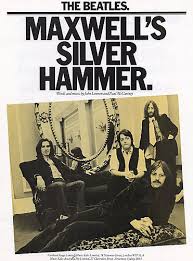 With George moving to electric guitar with wah-wah pedal and Ringo on drums, the song developed a little further. Ringo played a standard rock beat while Paul acknowledged Jackie Lomax's inspiration by calling out “C'mon Jackie” and then attempting to imitate the English vocalist during the second chorus of this rough rehearsal. The lines “she was another man” and “gets it while she can” had been retained here, these phrases now being solidified in Paul's mind. Surprisingly, even though their inspiration was running high with this new composition and rehearsal, they instead returned to working on songs like “I've Got A Feeling” and “Maxwell's Silver Hammer” once John Lennon arrived on that day. With George moving to electric guitar with wah-wah pedal and Ringo on drums, the song developed a little further. Ringo played a standard rock beat while Paul acknowledged Jackie Lomax's inspiration by calling out “C'mon Jackie” and then attempting to imitate the English vocalist during the second chorus of this rough rehearsal. The lines “she was another man” and “gets it while she can” had been retained here, these phrases now being solidified in Paul's mind. Surprisingly, even though their inspiration was running high with this new composition and rehearsal, they instead returned to working on songs like “I've Got A Feeling” and “Maxwell's Silver Hammer” once John Lennon arrived on that day.
 Two days later, on January 9th, 1969, the band returned to Twickenham Studios to hash out four renditions of the unfinished song that would eventually become “Get Back.” After all four Beatles put in a lot of work on the songs “Let It Be” and “For You Blue,” among others, they began rough jams based around Paul's “get back” theme, this undoubtedly being the first time Lennon got familiar with it. Two days later, on January 9th, 1969, the band returned to Twickenham Studios to hash out four renditions of the unfinished song that would eventually become “Get Back.” After all four Beatles put in a lot of work on the songs “Let It Be” and “For You Blue,” among others, they began rough jams based around Paul's “get back” theme, this undoubtedly being the first time Lennon got familiar with it.
 The verse lyrics were still adlibbed at this point but bits of a rough storyline were now starting to come together, references to California and Arizona being sung here and there in the first couple of renditions performed on this day. However, local news items concerning Parliament member Enoch Powell's beliefs that too many non-white citizens of the British Empire had been immigrating to England and taking away limited jobs were discussed by The Beatles at this session. Since Paul struggled to piece together coherent lyrics to this song, John humorously proposed the infusion of this subject matter into the lyrics to create a political satire. The verse lyrics were still adlibbed at this point but bits of a rough storyline were now starting to come together, references to California and Arizona being sung here and there in the first couple of renditions performed on this day. However, local news items concerning Parliament member Enoch Powell's beliefs that too many non-white citizens of the British Empire had been immigrating to England and taking away limited jobs were discussed by The Beatles at this session. Since Paul struggled to piece together coherent lyrics to this song, John humorously proposed the infusion of this subject matter into the lyrics to create a political satire.
 “Don't want no black man...!” John demonstrated, which was countered by Paul with “Don't dig no Pakistanis taking all the people's jobs.” Paul then directs his band-mates into another rendition of the song, screaming “Get Back!” over and over in a voice mocking the sheer abhorrence in Enoch Powell's public statements. Verses of this version include Paul singing “lots of Puerto Ricans,” “All the folks around sit by, he a Mohican living in the USA” and singing his earlier idea “Don't dig no Pakistanis taking all the people's jobs.” The song finishes with Paul screaming out maniacally in a way that reminds one of how Lennon concluded the final moments of his hit “Cold Turkey” to simulate his withdrawl from heroin. Since John's song was to be recorded later that same year, it can easily be suggested that this early rendition of “Get Back” may have been remembered and thereby have been his inspiration, if only subliminally. “Don't want no black man...!” John demonstrated, which was countered by Paul with “Don't dig no Pakistanis taking all the people's jobs.” Paul then directs his band-mates into another rendition of the song, screaming “Get Back!” over and over in a voice mocking the sheer abhorrence in Enoch Powell's public statements. Verses of this version include Paul singing “lots of Puerto Ricans,” “All the folks around sit by, he a Mohican living in the USA” and singing his earlier idea “Don't dig no Pakistanis taking all the people's jobs.” The song finishes with Paul screaming out maniacally in a way that reminds one of how Lennon concluded the final moments of his hit “Cold Turkey” to simulate his withdrawl from heroin. Since John's song was to be recorded later that same year, it can easily be suggested that this early rendition of “Get Back” may have been remembered and thereby have been his inspiration, if only subliminally.
 After this was out of their systems, they returned to a more serious rehearsal of the song “Get Back” with the principal characters Joe and Theresa now being introduced for the first time. A little later that day, however, Enoch Powell's beliefs were once again the subject of an adlibbed song, this being referred to in bootleg releases under the title “Commonwealth.” With Harold Wilson and Edward Heath once again being refrenced in the lyrics of a Beatles song (see “Taxman”), Paul begins by mimicking the recent British smash “Isrealites” by Desmond Dekker with its reggae beat and distinctive vocalization. As the song transcends into a more typical 12-bar pattern as heard in early Elvis recordings, John adds to the fun of the occasion by suggesting to end each chorus with the line “The commonwealth is much too common for me.” After this was out of their systems, they returned to a more serious rehearsal of the song “Get Back” with the principal characters Joe and Theresa now being introduced for the first time. A little later that day, however, Enoch Powell's beliefs were once again the subject of an adlibbed song, this being referred to in bootleg releases under the title “Commonwealth.” With Harold Wilson and Edward Heath once again being refrenced in the lyrics of a Beatles song (see “Taxman”), Paul begins by mimicking the recent British smash “Isrealites” by Desmond Dekker with its reggae beat and distinctive vocalization. As the song transcends into a more typical 12-bar pattern as heard in early Elvis recordings, John adds to the fun of the occasion by suggesting to end each chorus with the line “The commonwealth is much too common for me.”
 The following day at Twickenham, or January 10th, 1969, saw the most substantial work on “Get Back” yet. Paul rehearsed the song himself on piano before the others arrived and were ready for work, as was his habit during these sessions, but then he showed himself eager to solidify a band arrangement for the tune. He instructed them to begin the track with a crashing chord (not unlike “A Hard Day's Night”) followed by a drum fill from Ringo before the first verse began. A practice of this intro is featured on the “Fly On The Wall” bonus disc contained with the 2003 released “Let It Be...Naked” LP as well as on Peter Jackson's "Get Back" series. The following day at Twickenham, or January 10th, 1969, saw the most substantial work on “Get Back” yet. Paul rehearsed the song himself on piano before the others arrived and were ready for work, as was his habit during these sessions, but then he showed himself eager to solidify a band arrangement for the tune. He instructed them to begin the track with a crashing chord (not unlike “A Hard Day's Night”) followed by a drum fill from Ringo before the first verse began. A practice of this intro is featured on the “Fly On The Wall” bonus disc contained with the 2003 released “Let It Be...Naked” LP as well as on Peter Jackson's "Get Back" series.
 “Get Back” was practiced a total of 22 times on this day, three vocal verses now being sketched out in a preliminary way but not solidified. George had been delegated to perform a guitar solo to be followed by another chorus immediately afterward, Ringo adding in another two measure solo before the third verse appeared. Lyrically, the “Sweet Lorreta...but she was another man” verse was already in place, although it appeared as the first verse. The second verse was not complete yet, but did include the line about “California grass” as we've become familiar with in the first verse (not "blast from the past" as Ringo suggested). The third verse that discusses “Pakistanis living in a council flat,” as detailed above, was in place at this time. “Get Back” was practiced a total of 22 times on this day, three vocal verses now being sketched out in a preliminary way but not solidified. George had been delegated to perform a guitar solo to be followed by another chorus immediately afterward, Ringo adding in another two measure solo before the third verse appeared. Lyrically, the “Sweet Lorreta...but she was another man” verse was already in place, although it appeared as the first verse. The second verse was not complete yet, but did include the line about “California grass” as we've become familiar with in the first verse (not "blast from the past" as Ringo suggested). The third verse that discusses “Pakistanis living in a council flat,” as detailed above, was in place at this time.
 It is clear that they were narrowing down what their final arrangement would be, this being a fast-moving rocker at this point with a standard 4/4 drum beat from Ringo and a wah-wah guitar solo from George. McCartney was noting the similarities of this new arrangement to earlier Beatles tracks and wanting to avoid those comparisons, "She's A Woman" being identified as a suitable direction to go in, which John then proceeds to demonstrate on guitar. One version of "Get Back" performed at this session has John singing lead vocals in unison with Paul, suitably recapturing their early rock and roll days with apparent enthusiasm from all involved. It is clear that they were narrowing down what their final arrangement would be, this being a fast-moving rocker at this point with a standard 4/4 drum beat from Ringo and a wah-wah guitar solo from George. McCartney was noting the similarities of this new arrangement to earlier Beatles tracks and wanting to avoid those comparisons, "She's A Woman" being identified as a suitable direction to go in, which John then proceeds to demonstrate on guitar. One version of "Get Back" performed at this session has John singing lead vocals in unison with Paul, suitably recapturing their early rock and roll days with apparent enthusiasm from all involved.
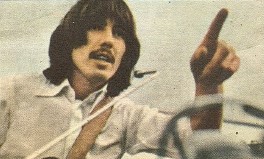 It appears, however, that Harrison was not enjoying the comradarie of the rest of The Beatles during this session because, sometime during their lunch break, George announced that he was leaving the band for good and walked out. The others continued with the rehearsal after his lunchtime departure, Yoko Ono sitting in the guitarist's seat screaming out vocals at one point, although no other noteworthy progress was made on this day. It appears, however, that Harrison was not enjoying the comradarie of the rest of The Beatles during this session because, sometime during their lunch break, George announced that he was leaving the band for good and walked out. The others continued with the rehearsal after his lunchtime departure, Yoko Ono sitting in the guitarist's seat screaming out vocals at one point, although no other noteworthy progress was made on this day.
 January 13th, 1969 became another rehearsal day for The Beatles at Twickenham, but without George. They spent most of the time talking instead of rehearsaing, John not particularly enthused about George continuing with the group and even suggesting that they should all pursue solo careers. Paul took the position of rallying everyone together, promoting the idea of concentrating less on details and more on doing the best that they can as musicians, George included. The band did run through “Get Back” 15 times on this day as a trio, John Lennon taking on the role of lead guitarist in George's absence. January 13th, 1969 became another rehearsal day for The Beatles at Twickenham, but without George. They spent most of the time talking instead of rehearsaing, John not particularly enthused about George continuing with the group and even suggesting that they should all pursue solo careers. Paul took the position of rallying everyone together, promoting the idea of concentrating less on details and more on doing the best that they can as musicians, George included. The band did run through “Get Back” 15 times on this day as a trio, John Lennon taking on the role of lead guitarist in George's absence.
 More lyrical refinements were deemed necessary, these being dictated for Mal Evans to write down on paper as we see in Peter Jackson's "Get Back" documentary series. Some discussions about what Loretta's last name should be were batted around, John suggesting “Meatball” but Paul thinking of “Marsh,” "Mary" or “Marvin.” "Tucson, Arizona" was decided upon at this session, Paul explaining that it was "where they make 'High Chaperral,'" a popular American TV program of that time, not to mention his suggestion being a possible subliminal recollection of where Apple staff member Chris O'Dell was raised. Ringo's timing during his drum breaks habitually disoriented his band-mates, while John added guitar fills in the open spaces where no vocals were present and provided solos that were not coherent, these borrowing from Dale Hawkins rendition of “Suzie Q.” Obviously, George Harrison was missed. More lyrical refinements were deemed necessary, these being dictated for Mal Evans to write down on paper as we see in Peter Jackson's "Get Back" documentary series. Some discussions about what Loretta's last name should be were batted around, John suggesting “Meatball” but Paul thinking of “Marsh,” "Mary" or “Marvin.” "Tucson, Arizona" was decided upon at this session, Paul explaining that it was "where they make 'High Chaperral,'" a popular American TV program of that time, not to mention his suggestion being a possible subliminal recollection of where Apple staff member Chris O'Dell was raised. Ringo's timing during his drum breaks habitually disoriented his band-mates, while John added guitar fills in the open spaces where no vocals were present and provided solos that were not coherent, these borrowing from Dale Hawkins rendition of “Suzie Q.” Obviously, George Harrison was missed.
 After negotiations with George, he decided to rejoin The Beatles and continue the group's rehearsals for the current project. However, one condition that he insisted on was changing their rehearsal location from the cold Twickenham Studios to their newly aquired Apple Studios at 3 Savile Row, London. Another change was the appearance of Billy Preston who was in town to film some television guest spots and decided to drop by to visit Apple Studios. Billy Preston was a keyboardist that The Beatles had met way back in 1962 during the band's shared bill with Little Richard and whom George had just recently witnesses performing with Ray Charles and had been bragging to his bandmates about. When Lennon asked Billy Preston if he would be willing to join them for the remainder of this project, as seen in the Peter Jackson "Get Back" series, he readily agreed. After negotiations with George, he decided to rejoin The Beatles and continue the group's rehearsals for the current project. However, one condition that he insisted on was changing their rehearsal location from the cold Twickenham Studios to their newly aquired Apple Studios at 3 Savile Row, London. Another change was the appearance of Billy Preston who was in town to film some television guest spots and decided to drop by to visit Apple Studios. Billy Preston was a keyboardist that The Beatles had met way back in 1962 during the band's shared bill with Little Richard and whom George had just recently witnesses performing with Ray Charles and had been bragging to his bandmates about. When Lennon asked Billy Preston if he would be willing to join them for the remainder of this project, as seen in the Peter Jackson "Get Back" series, he readily agreed.
 It was during the session on January 23rd, 1969 at Apple Studios that the group, with Billy Preston in tow, solidified Ringo's new galloping drum pattern for the arrangement of “Get Back,” Harrison's chopping guitar pattern and John Lennon's guitar solo work (something that most likely would not have occured if George hadn't left the group during the formation of the song) and backing vocals also taking shape considerably. "You bring the song in, you kick it around, and then someone gets an idea," Paul related on his 2021 Hulu series "McCartney 3,2,1." "'Why don't we do that?,' or 'How 'bout this on the drums?' or Ringo, like on something like 'Get Back.' We were just kicking it all around. There's a little jam and then he gets on the drums, 'bum, buppa, bum, buppa, bum...' He's got this little kind of almost military thing going. Well, that really was, 'Aah, great, different!' It made a world of difference." It was during the session on January 23rd, 1969 at Apple Studios that the group, with Billy Preston in tow, solidified Ringo's new galloping drum pattern for the arrangement of “Get Back,” Harrison's chopping guitar pattern and John Lennon's guitar solo work (something that most likely would not have occured if George hadn't left the group during the formation of the song) and backing vocals also taking shape considerably. "You bring the song in, you kick it around, and then someone gets an idea," Paul related on his 2021 Hulu series "McCartney 3,2,1." "'Why don't we do that?,' or 'How 'bout this on the drums?' or Ringo, like on something like 'Get Back.' We were just kicking it all around. There's a little jam and then he gets on the drums, 'bum, buppa, bum, buppa, bum...' He's got this little kind of almost military thing going. Well, that really was, 'Aah, great, different!' It made a world of difference."
 While their third verse concerning “Pakistanis” was omitted on this day, Paul, George and John were all instrumental in working out the song's structure. Because both John and Billy Preston were to perform individual solos, Paul thought to vocally introduce them individually by either of the two main characters in the song's lyrics. "Which do you want to be, Jojo or Loretta?," Paul asked John, demonstrating, "'Get back to sweet Loretta! He's waiting for you,' and it's an old drag queen back on the ranch in Tucson, 'wearing his hi-heel shoes!'" George notes the song's similarity to a classic Motown hit by The Four Tops. "It's like 'Reach Out.' Remember in 'Reach Out' where everything stops and then...'I'll be back! (sic)' That's what the song needs, it needs a catchy riff." Paul then decides to include a subdued chorus after the first solo and then introduce the next solo section with a descending keyboard riff by Billy Preston during the break that Harrison suggested. After a second guitar solo from John is decided upon, they decide to try standing up to rehearse their newly arranged song, which resulted in a humorous medley of "Help!" and "Please Please Me" that sent everybody into hysterics. Although a final "Beatles break" and coda was yet to materialize, the song's final arrangement as we know it was getting close. While their third verse concerning “Pakistanis” was omitted on this day, Paul, George and John were all instrumental in working out the song's structure. Because both John and Billy Preston were to perform individual solos, Paul thought to vocally introduce them individually by either of the two main characters in the song's lyrics. "Which do you want to be, Jojo or Loretta?," Paul asked John, demonstrating, "'Get back to sweet Loretta! He's waiting for you,' and it's an old drag queen back on the ranch in Tucson, 'wearing his hi-heel shoes!'" George notes the song's similarity to a classic Motown hit by The Four Tops. "It's like 'Reach Out.' Remember in 'Reach Out' where everything stops and then...'I'll be back! (sic)' That's what the song needs, it needs a catchy riff." Paul then decides to include a subdued chorus after the first solo and then introduce the next solo section with a descending keyboard riff by Billy Preston during the break that Harrison suggested. After a second guitar solo from John is decided upon, they decide to try standing up to rehearse their newly arranged song, which resulted in a humorous medley of "Help!" and "Please Please Me" that sent everybody into hysterics. Although a final "Beatles break" and coda was yet to materialize, the song's final arrangement as we know it was getting close.
 A total of 43 rehearsals of “Get Back” were done at this session, at least ten of these being attempted as official recordings with both Glyn Johns and George Martin present in Apple's control room. “What are you calling this," George Martin asked them before the first official take was recorded, Paul answering, "Sh*t,” John adding, "Sh*t Back!" “'Sh*t' take one,” George Martin designated as the tape started rolling. 20-year-old Alan Parsons made his debut as tape operator at this session, his quite impressive career as engineer, producer and musician beginning by witnessing The Beatles formalize the song “Get Back” before his eyes. Interestingly, while listening back to recordings of the song on this day in their control room, George Harrison asked the others what their last single was and how long ago it released. When Paul answered it was "Hey Jude" and it was roughly five months ago, George suggested, "It'd be nice to do takes until we get it and just have it (out) before the show...Just put it out as a single next week." John showed that he was on board, stating, "Let's finish it off for a single tomorrow, and we'll do 'Part Two' on the back side!" With this decided, nixing John's idea to put "Get Back (Part Two)" on the b-side, they had a definate goal for their next session. A total of 43 rehearsals of “Get Back” were done at this session, at least ten of these being attempted as official recordings with both Glyn Johns and George Martin present in Apple's control room. “What are you calling this," George Martin asked them before the first official take was recorded, Paul answering, "Sh*t,” John adding, "Sh*t Back!" “'Sh*t' take one,” George Martin designated as the tape started rolling. 20-year-old Alan Parsons made his debut as tape operator at this session, his quite impressive career as engineer, producer and musician beginning by witnessing The Beatles formalize the song “Get Back” before his eyes. Interestingly, while listening back to recordings of the song on this day in their control room, George Harrison asked the others what their last single was and how long ago it released. When Paul answered it was "Hey Jude" and it was roughly five months ago, George suggested, "It'd be nice to do takes until we get it and just have it (out) before the show...Just put it out as a single next week." John showed that he was on board, stating, "Let's finish it off for a single tomorrow, and we'll do 'Part Two' on the back side!" With this decided, nixing John's idea to put "Get Back (Part Two)" on the b-side, they had a definate goal for their next session.
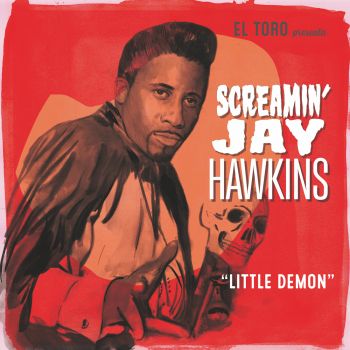 On the following day at Apple Studios, January 24th, 1969, The Beatles ran through “Get Back” a total of 21 times, some of which were performed before Billy Preston's mid-afternoon arrival. Thereafter, they ran through a rendition where Lennon missed his cue to begin his first guitar solo, prompting McCartney to exclaim, “Yeah...or should I say 'No.'” Another rendition started off at a very rapid pace, developing into a medley with Screamin' Jay Hawkins' “Little Demon” along with three other favorite rock 'n' roll songs, Chuck Berry's hits “Maybelene,” “You Can't Catch Me” and “Brown Eyed Handsome Man.” On the following day at Apple Studios, January 24th, 1969, The Beatles ran through “Get Back” a total of 21 times, some of which were performed before Billy Preston's mid-afternoon arrival. Thereafter, they ran through a rendition where Lennon missed his cue to begin his first guitar solo, prompting McCartney to exclaim, “Yeah...or should I say 'No.'” Another rendition started off at a very rapid pace, developing into a medley with Screamin' Jay Hawkins' “Little Demon” along with three other favorite rock 'n' roll songs, Chuck Berry's hits “Maybelene,” “You Can't Catch Me” and “Brown Eyed Handsome Man.”
 One new development in the song's arrangement at this session was the inclusion of a coda at the end, this being experiemnted with reprises of different lengths. In fact, some versions rehearsed on this day show them going into back-to-back versions of the song with many spirited vocal improvisations from Paul. The final version of the day has Paul exclaiming, "Go Home!...It's Past Seven!...Go Home!...I've Got An Appointment!...Get A Job!...Go Home, Yank!" One new development in the song's arrangement at this session was the inclusion of a coda at the end, this being experiemnted with reprises of different lengths. In fact, some versions rehearsed on this day show them going into back-to-back versions of the song with many spirited vocal improvisations from Paul. The final version of the day has Paul exclaiming, "Go Home!...It's Past Seven!...Go Home!...I've Got An Appointment!...Get A Job!...Go Home, Yank!"
 Thirty-two renditions of “Get Back” were recorded by the band at Apple Studios on January 27th, 1969, most of these being officially recorded by George Martin and Glyn Johns with young Alan Parsons as engineer. Before they started taping, The Beatles and Billy Preston ran through the song multiple times until they eventually became confident that they were ready to record the definitive version. During the song's introduction, as we can see in Peter Jackson's "Get Back" documentary, John slaps his guitar strings while holding the chord formation on the fret board with his left hand, strategically slapping harder to increase the volume as the introduction progressed. One fast tempo rendition was done with Paul singing the first verse in mock Japanese while including the phrase “sock it to me,” a residual from their current obsession with the American TV show “Rowan & Martin's Laugh In,” which was referenced many times in their January 1969 rehearsals and recording sessions. (Catch phrases from this program are stated regularly by The Beatles during these sessions, including "Sock It To Me" and "Is That A Chicken Joke?", Ringo eventually making a guest appearance on the show on February 23rd, 1970 in promotion of the US premier of his movie "The Magic Christian.") Thirty-two renditions of “Get Back” were recorded by the band at Apple Studios on January 27th, 1969, most of these being officially recorded by George Martin and Glyn Johns with young Alan Parsons as engineer. Before they started taping, The Beatles and Billy Preston ran through the song multiple times until they eventually became confident that they were ready to record the definitive version. During the song's introduction, as we can see in Peter Jackson's "Get Back" documentary, John slaps his guitar strings while holding the chord formation on the fret board with his left hand, strategically slapping harder to increase the volume as the introduction progressed. One fast tempo rendition was done with Paul singing the first verse in mock Japanese while including the phrase “sock it to me,” a residual from their current obsession with the American TV show “Rowan & Martin's Laugh In,” which was referenced many times in their January 1969 rehearsals and recording sessions. (Catch phrases from this program are stated regularly by The Beatles during these sessions, including "Sock It To Me" and "Is That A Chicken Joke?", Ringo eventually making a guest appearance on the show on February 23rd, 1970 in promotion of the US premier of his movie "The Magic Christian.")
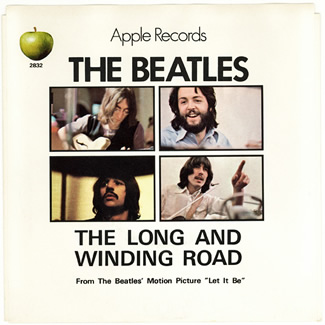 After George encourages everyone by saying, "Let's record it all this afternoon, now," the tapes started rolling, many good takes being recorded. Everyone, however, was concerned about recording the song at an appropriate tempo, Glyn Johns asserting after one take, "Do you think a gnat's slower still?" After "take eight," which concluded with Paul singing, “it's five o'clock, your mother's got your tea on, take your cap off, sit down, you're bloody not coming in,” George Martin commented, "Paul, I think it's a shade too slow now. I think it's lost a bit." After a roughly estimated "take nine,” which could in actuality have been "take 18,” Paul's reaction “nearly” was caught on tape, thus suggesting that they were getting close. McCartney's vocal hijinks during these recordings appear to be an indication that his sour mood that was evident earlier that day during the unproductive rehearsals for "Let It Be" and "The Long And Winding Road" had now lifted, Paul undoubtedly realizing that The Beatles work best as a team when a "rocker" is being performed. After George encourages everyone by saying, "Let's record it all this afternoon, now," the tapes started rolling, many good takes being recorded. Everyone, however, was concerned about recording the song at an appropriate tempo, Glyn Johns asserting after one take, "Do you think a gnat's slower still?" After "take eight," which concluded with Paul singing, “it's five o'clock, your mother's got your tea on, take your cap off, sit down, you're bloody not coming in,” George Martin commented, "Paul, I think it's a shade too slow now. I think it's lost a bit." After a roughly estimated "take nine,” which could in actuality have been "take 18,” Paul's reaction “nearly” was caught on tape, thus suggesting that they were getting close. McCartney's vocal hijinks during these recordings appear to be an indication that his sour mood that was evident earlier that day during the unproductive rehearsals for "Let It Be" and "The Long And Winding Road" had now lifted, Paul undoubtedly realizing that The Beatles work best as a team when a "rocker" is being performed.
 Before one take, John humorously remarked, “Sweet Loretta Fart (pronounced in a Liverpudlian accent) she thought she was a cleaner, but she was a frying pan...the picker...picks with his fingers.” This vocal segment, along with some extraneous studio sounds, ended up being included on the released soundtrack album. John began one take by exclaiming, "Ah, this here is the story of Sweet Loretta Martin and JoJo McCartney," while Lennon later sings lead vocals on a slower bluesy version of the song, this being called to a halt by Paul, saying, 'All right, boys, all right John, I gotta call it on you...Cool down, sod!" Lennon replied to this by saying, "Don't let me down, babe!" On another take, the coda included Paul's ad libbed “one, two, three o'clock, four o'clock rock” from Bill Haley's 'Rock Around The Clock.” Before one take, John humorously remarked, “Sweet Loretta Fart (pronounced in a Liverpudlian accent) she thought she was a cleaner, but she was a frying pan...the picker...picks with his fingers.” This vocal segment, along with some extraneous studio sounds, ended up being included on the released soundtrack album. John began one take by exclaiming, "Ah, this here is the story of Sweet Loretta Martin and JoJo McCartney," while Lennon later sings lead vocals on a slower bluesy version of the song, this being called to a halt by Paul, saying, 'All right, boys, all right John, I gotta call it on you...Cool down, sod!" Lennon replied to this by saying, "Don't let me down, babe!" On another take, the coda included Paul's ad libbed “one, two, three o'clock, four o'clock rock” from Bill Haley's 'Rock Around The Clock.”
 The Beatles then filed into the control room to have a listen to what they had just recorded, but not being all that impressed. "YOU were very good, Bill," George Martin told Billy Preston, insinuating that he was the only one who did a good job, this resulted in laughter all around as well as Ringo confirming, "Bill, you were just great!" After one take that was clearly too fast, a seated Harrison inquired, "Well, should we have another ciggy, another cup of tea or some wine?" After he was told "No" from the control room and the recording light immediately turned on, George said "Oh, already," stood up and then quickly counted off "take 11," "One, two, three, four." The take that followed ended up becoming the basis for both the single and album, although the rehearsed coda was not performed due to Ringo forgetting to come back in after their break near the song's conclusion. After Paul sang his iconic “oooh,” Harrison stated, "We missed that end, didn't we?" "I thought you were going on," George Martin exclaimed, adding, "Do you want to end it like that?" Ringo replied, "Just plug it on - the best end we did." The Beatles then filed into the control room to have a listen to what they had just recorded, but not being all that impressed. "YOU were very good, Bill," George Martin told Billy Preston, insinuating that he was the only one who did a good job, this resulted in laughter all around as well as Ringo confirming, "Bill, you were just great!" After one take that was clearly too fast, a seated Harrison inquired, "Well, should we have another ciggy, another cup of tea or some wine?" After he was told "No" from the control room and the recording light immediately turned on, George said "Oh, already," stood up and then quickly counted off "take 11," "One, two, three, four." The take that followed ended up becoming the basis for both the single and album, although the rehearsed coda was not performed due to Ringo forgetting to come back in after their break near the song's conclusion. After Paul sang his iconic “oooh,” Harrison stated, "We missed that end, didn't we?" "I thought you were going on," George Martin exclaimed, adding, "Do you want to end it like that?" Ringo replied, "Just plug it on - the best end we did."
 Also of some interest here is, because of the roughness of Paul's voice by this time, George Harrison appeared to state "Let's give him some 'Night Nurse'" just before McCartney voiced his iconic "oooh" mentioned above. "Night Nurse" was a cold and flu medication commonly used in those days for sore throats, George's suggestion being quietly heard during this lull in their recording on the released single. Also of some interest here is, because of the roughness of Paul's voice by this time, George Harrison appeared to state "Let's give him some 'Night Nurse'" just before McCartney voiced his iconic "oooh" mentioned above. "Night Nurse" was a cold and flu medication commonly used in those days for sore throats, George's suggestion being quietly heard during this lull in their recording on the released single.
 Their flubbed ending propelled them into multiple newly recorded renditions of the song, but the above mentioned take was ultimately considered the "best." A later recording from this day included a further rendition featuring pseudo-German lyrics, acknowledging the original Jackie Lomax influence incorporating the phrase, “Yah, that's good, Jackie,” with a final verse in mock French. While very entertaining and eventually gracing bootleg releases, it was obvious that they had previously recorded the definitive version of the song on this day and were celebrating that event in a rather unconventional way. Upon re-entering the control room for further listening, they discussed better parts of different takes. George Martin suggested, "We could always edit," to which John humorously replied, "Edit? You're talking to The Bootles!" Their flubbed ending propelled them into multiple newly recorded renditions of the song, but the above mentioned take was ultimately considered the "best." A later recording from this day included a further rendition featuring pseudo-German lyrics, acknowledging the original Jackie Lomax influence incorporating the phrase, “Yah, that's good, Jackie,” with a final verse in mock French. While very entertaining and eventually gracing bootleg releases, it was obvious that they had previously recorded the definitive version of the song on this day and were celebrating that event in a rather unconventional way. Upon re-entering the control room for further listening, they discussed better parts of different takes. George Martin suggested, "We could always edit," to which John humorously replied, "Edit? You're talking to The Bootles!"
 The following day, January 28th, 1969, brought further refinements to many of the band's new songs at Apple Studios, George Martin being present at this session as well as Glyn Johns and Alan Parsons. The Beatles also spent time on a newly composed Harrison composition entitled “Something,” its composer requesting for some lyrical help from his band-mates. However, this turned out to be a productive session, the released rendition of “Don't Let Me Down” being recorded on this day minus some simple overdubs that would be incorporated into the mix later. The following day, January 28th, 1969, brought further refinements to many of the band's new songs at Apple Studios, George Martin being present at this session as well as Glyn Johns and Alan Parsons. The Beatles also spent time on a newly composed Harrison composition entitled “Something,” its composer requesting for some lyrical help from his band-mates. However, this turned out to be a productive session, the released rendition of “Don't Let Me Down” being recorded on this day minus some simple overdubs that would be incorporated into the mix later.
 One other accomplishment of this day was the coda of “Get Back” which was mistakenly omited from the best take from the previous day. The Beatles ran through this song seven more times, Lennon's guitar solos as well as Billy Preston's keyboard solo being fully solidified at this point. One of these versions was considered unsuitable because of Paul's flubbed line in the first verse (“Jojo was at home in Tucson, Arizona”) and Ringo's continuing slow tempo. “Slow it down, Loretta,” Paul sang during the final solo as a reaction to the drummer's playing. We witness Paul's clever rhyme “low neck sweater / get back Loretta” repeatedly during this version's coda, the singer then obviously being fixated on the lyrical flow of these lines. One other accomplishment of this day was the coda of “Get Back” which was mistakenly omited from the best take from the previous day. The Beatles ran through this song seven more times, Lennon's guitar solos as well as Billy Preston's keyboard solo being fully solidified at this point. One of these versions was considered unsuitable because of Paul's flubbed line in the first verse (“Jojo was at home in Tucson, Arizona”) and Ringo's continuing slow tempo. “Slow it down, Loretta,” Paul sang during the final solo as a reaction to the drummer's playing. We witness Paul's clever rhyme “low neck sweater / get back Loretta” repeatedly during this version's coda, the singer then obviously being fixated on the lyrical flow of these lines.
 A later rendition recorded on this day was at a good tempo and was instrumentally performed quite well, except for a sour note from an open string ringing out on John's guitar as he began his first solo. This by itself may have prompted McCartney to become vocally playful for the rest of the song, his exaggerated exclamations being evidence that he didn't think that this take would be suitable for a finished version. A later rendition recorded on this day was at a good tempo and was instrumentally performed quite well, except for a sour note from an open string ringing out on John's guitar as he began his first solo. This by itself may have prompted McCartney to become vocally playful for the rest of the song, his exaggerated exclamations being evidence that he didn't think that this take would be suitable for a finished version.
 Paul was half right and half wrong. It was decided that, while the above mentioned rendition from the previous day would be used for the body of the song, the first 35 seconds of the coda from this session's version would be edited on and faded out to form the released single a couple months or so later. Actually, a further 41 second segment from this coda would be utilized as a track entitled “Get Back (reprise)” on both aborted versions of the proposed “Get Back” LP (as we'll discuss below), not to mention being utilized during the closing segment of the “Let It Be” movie. Paul was half right and half wrong. It was decided that, while the above mentioned rendition from the previous day would be used for the body of the song, the first 35 seconds of the coda from this session's version would be edited on and faded out to form the released single a couple months or so later. Actually, a further 41 second segment from this coda would be utilized as a track entitled “Get Back (reprise)” on both aborted versions of the proposed “Get Back” LP (as we'll discuss below), not to mention being utilized during the closing segment of the “Let It Be” movie.
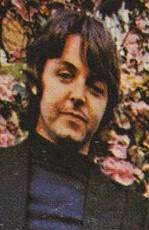 This entire coda was 1:22 long, Paul excitedly ad libbing lines such as “get back / get together...we gotta get together...ah-ah-ah-ah-ah...put on your high heel sweater!” Lennon also joined in on the fun by singing “get back” and making various vocal sounds before ending the coda with the chilling rhyme “Shoot me when I'm evil / shoot me when I'm good / shoot me when I'm hungry / shoot me when I'm...” This entire coda was 1:22 long, Paul excitedly ad libbing lines such as “get back / get together...we gotta get together...ah-ah-ah-ah-ah...put on your high heel sweater!” Lennon also joined in on the fun by singing “get back” and making various vocal sounds before ending the coda with the chilling rhyme “Shoot me when I'm evil / shoot me when I'm good / shoot me when I'm hungry / shoot me when I'm...”
 One final rendition on this day was partitularly unfruitful, first because of Paul coming in late vocally on the first verse. John's second guitar solo labored almost exclusively on his opening note being repeated over and over again. John eventually broke away from playing this but it was obviously not something that would grace any released version. Ringo didn't come back in for a coda for this recording, understandably reasoning that this take wasn't worth the effort of doing so. One final rendition on this day was partitularly unfruitful, first because of Paul coming in late vocally on the first verse. John's second guitar solo labored almost exclusively on his opening note being repeated over and over again. John eventually broke away from playing this but it was obviously not something that would grace any released version. Ringo didn't come back in for a coda for this recording, understandably reasoning that this take wasn't worth the effort of doing so.
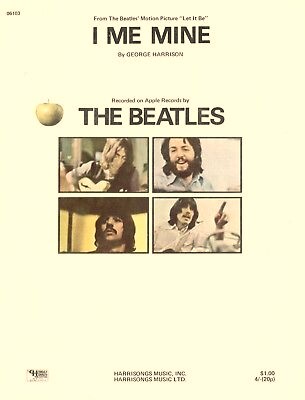 It was on the following day, January 29th, 1969, that The Beatles decided that their proposed live concert would be on the roof of their Apple headquarters at 3 Savile Row in London during the lunchtime hours the next day, January 30th, 1969. That being the case, the group convened once again at Apple Studios, which was in the basement of that very building, for the primary purpose of rehearsing the songs that they would be performing live on the rooftop the following afternoon. After this was completed, Billy Preston not arriving until later that day, The Beatles ran through other songs that needed to be rehearsed for inclusion in what eventually became the “Let It Be” film. Since a firm decision had not been made on which Harrison song would be included in this project, various George compositions were rehearsed on this day, “For You Blue” and eventually “I Me Mine” fitting the bill. It was on the following day, January 29th, 1969, that The Beatles decided that their proposed live concert would be on the roof of their Apple headquarters at 3 Savile Row in London during the lunchtime hours the next day, January 30th, 1969. That being the case, the group convened once again at Apple Studios, which was in the basement of that very building, for the primary purpose of rehearsing the songs that they would be performing live on the rooftop the following afternoon. After this was completed, Billy Preston not arriving until later that day, The Beatles ran through other songs that needed to be rehearsed for inclusion in what eventually became the “Let It Be” film. Since a firm decision had not been made on which Harrison song would be included in this project, various George compositions were rehearsed on this day, “For You Blue” and eventually “I Me Mine” fitting the bill.
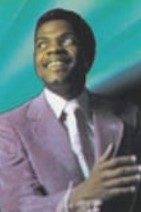 Then one quick rehearsal of “Get Back” without Billy Preston was done, which was quite loose but suitable to solidify that it was ready for the live show. John sang Billy Preston's keyboard solo (“get-ang, get-ang, get-ang...”) and Paul encouraged John's proficiency as lead guitarist by saying “yeah” midway through his first solo. They apparently felt confident that they would nail it just fine the next day. Then one quick rehearsal of “Get Back” without Billy Preston was done, which was quite loose but suitable to solidify that it was ready for the live show. John sang Billy Preston's keyboard solo (“get-ang, get-ang, get-ang...”) and Paul encouraged John's proficiency as lead guitarist by saying “yeah” midway through his first solo. They apparently felt confident that they would nail it just fine the next day.
 The following afternoon, January 30th, 1969, was the eventful day of The Beatles' final live concert, Billy Preston playing Fender Rhodes electric piano to compliment the group's musical landscape. “Get Back” was touched on and/or performed a total of five times within this 42-minute performance. The first was a rehearsal which began with John playing his solo, the others joining in for the following chorus with both Paul and John harmonizing. This version was done simply for testing the recording equipment, adjustments being made thereafter to make sure everything was in order. The following afternoon, January 30th, 1969, was the eventful day of The Beatles' final live concert, Billy Preston playing Fender Rhodes electric piano to compliment the group's musical landscape. “Get Back” was touched on and/or performed a total of five times within this 42-minute performance. The first was a rehearsal which began with John playing his solo, the others joining in for the following chorus with both Paul and John harmonizing. This version was done simply for testing the recording equipment, adjustments being made thereafter to make sure everything was in order.
 The second version of “Get Back,” the first complete song of this day, ended with Paul stating, “Looks like Ted Dexter has scored another!” This was in response to the polite applause that followed their conclusion of the song, this being much more subdued than what the group had become accustomed to in the stadiums and concert halls of 1965 and 1966. Instead, it reminded Paul of crowd reaction at cricket matches, Ted Dexter being a celebrated English cricketer of the early 60's. Lennon then retorted, “Thank you very much...another request from Martin and Luther,” revisiting their BBC radio shows from 1963 where they would play requests from listeners. Engineer Glyn John inquired, “Any more voice from the Fenders?” He wondered if their amplifiers needed to be turned up. “Yeah, we'll cut,” he instructed to regroup in preparation for their next song, which turned out to be a third rendition of “Get Back.” The “Let It Be” film included a strategically edited version of the second and third versions of the song performed on this day. The second version of “Get Back,” the first complete song of this day, ended with Paul stating, “Looks like Ted Dexter has scored another!” This was in response to the polite applause that followed their conclusion of the song, this being much more subdued than what the group had become accustomed to in the stadiums and concert halls of 1965 and 1966. Instead, it reminded Paul of crowd reaction at cricket matches, Ted Dexter being a celebrated English cricketer of the early 60's. Lennon then retorted, “Thank you very much...another request from Martin and Luther,” revisiting their BBC radio shows from 1963 where they would play requests from listeners. Engineer Glyn John inquired, “Any more voice from the Fenders?” He wondered if their amplifiers needed to be turned up. “Yeah, we'll cut,” he instructed to regroup in preparation for their next song, which turned out to be a third rendition of “Get Back.” The “Let It Be” film included a strategically edited version of the second and third versions of the song performed on this day.
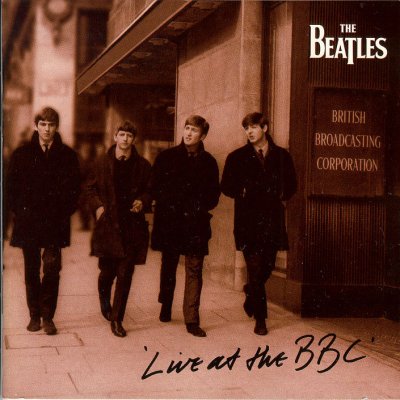 Their third rendition was complete, the intention being to capture a perfect performance. However, Paul chuckled a little bit after John flubbed his lead guitar flourish during verse two. After the song's break, Paul ad libbed, “Aaaah, get back home, never more to roam” and, after the final awkward conclusion and subsequent applause from those nearby, John states, “Oh, brother...had a request for Daisy, Morris and Tommy,” here continuing the early BBC radio reference from their previous performance. Their third rendition was complete, the intention being to capture a perfect performance. However, Paul chuckled a little bit after John flubbed his lead guitar flourish during verse two. After the song's break, Paul ad libbed, “Aaaah, get back home, never more to roam” and, after the final awkward conclusion and subsequent applause from those nearby, John states, “Oh, brother...had a request for Daisy, Morris and Tommy,” here continuing the early BBC radio reference from their previous performance.
 After multiple performances of four other newer songs were recorded, Lennon mistakenly counted off a fourth rendition of “Get Back,” Ringo joining in immediately. However, this was halted thereafter because a second live recording of “Don't Let Me Down” was required instead (John flubbing the lyrics in their first version). This brief snippet of "Get Back" can be considered its fourth rooftop version. After multiple performances of four other newer songs were recorded, Lennon mistakenly counted off a fourth rendition of “Get Back,” Ringo joining in immediately. However, this was halted thereafter because a second live recording of “Don't Let Me Down” was required instead (John flubbing the lyrics in their first version). This brief snippet of "Get Back" can be considered its fourth rooftop version.
 After "Don't Let Me Down" was complete at about the 40 minute mark of the concert, and with the uniformed constables from the West End Central Police Station just along Savile Row being present up on the Apple rooftop for the past few minutes, the band commenced their fifth and final attempt at their song “Get Back.” The policemen pressured Beatles assistant Mal Evans to shut off both of John and George's amplifiers at the beginning of the first chorus. Harrison turned his amp back on by the beginning of the first solo section of the song, Mal Evans relenting to turn Lennon's back on by the fourth measure of the solo due to inquisitive looks from John. They all must have known that this rendition would not be the definitive version but they carried on regardless, knowing that The Beatles may very well be making music history, the authorities attempting to squelch their impromptu performance. After "Don't Let Me Down" was complete at about the 40 minute mark of the concert, and with the uniformed constables from the West End Central Police Station just along Savile Row being present up on the Apple rooftop for the past few minutes, the band commenced their fifth and final attempt at their song “Get Back.” The policemen pressured Beatles assistant Mal Evans to shut off both of John and George's amplifiers at the beginning of the first chorus. Harrison turned his amp back on by the beginning of the first solo section of the song, Mal Evans relenting to turn Lennon's back on by the fourth measure of the solo due to inquisitive looks from John. They all must have known that this rendition would not be the definitive version but they carried on regardless, knowing that The Beatles may very well be making music history, the authorities attempting to squelch their impromptu performance.
 With their enthusiasm high, Paul excitedly repeated his “high heel shoes / low neck sweater / get back Loretta” lyric during Lennon's second guitar solo. When the coda of this final version kicked in, with the police still milling about and the downbeat of the song being temporarily lost, Paul exclaimed, “you've been out too long, Loretta, you've been playing on the roofs again, and that's no good, 'cause you know you're mommy doesn't like that, ah, she get's angry, she's gonna have you arrested, get back.” With their enthusiasm high, Paul excitedly repeated his “high heel shoes / low neck sweater / get back Loretta” lyric during Lennon's second guitar solo. When the coda of this final version kicked in, with the police still milling about and the downbeat of the song being temporarily lost, Paul exclaimed, “you've been out too long, Loretta, you've been playing on the roofs again, and that's no good, 'cause you know you're mommy doesn't like that, ah, she get's angry, she's gonna have you arrested, get back.”
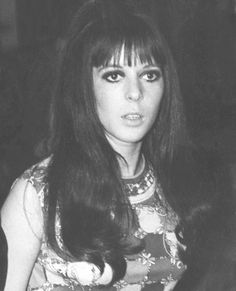 With it now quite obvious that their 42-minute show was complete at the conclusion of this song, Paul exclaimed “Thanks Mo,” in recognition of Maureen Starkey's final loud “yeah-ee-yeah” cheer. Off mike, John then quipped, “I'd like to say 'thank you' on behalf of the group and ourselves and I hope we passed the audition.” The above comments from both Paul and John ended up appearing on both the released “Let It Be” soundtrack album and film as well as Peter Jackson's "Get Back" documentary series. Paul was the first of The Beatles to hurriedly exit the roof as if to avoid police confrontation. As it happened, this was the very last song of the very last concert performance by The Beatles. With it now quite obvious that their 42-minute show was complete at the conclusion of this song, Paul exclaimed “Thanks Mo,” in recognition of Maureen Starkey's final loud “yeah-ee-yeah” cheer. Off mike, John then quipped, “I'd like to say 'thank you' on behalf of the group and ourselves and I hope we passed the audition.” The above comments from both Paul and John ended up appearing on both the released “Let It Be” soundtrack album and film as well as Peter Jackson's "Get Back" documentary series. Paul was the first of The Beatles to hurriedly exit the roof as if to avoid police confrontation. As it happened, this was the very last song of the very last concert performance by The Beatles.
 Upon leaving the roof on this day, the group immediately filed into the basement control room to listen to the recordings made moments before while a few "joss-sticks" were lit in order to create some atmosphere. As seen in Peter Jackson's "Get Back" documentary series, they all heard "Get Back" played back to them, Linda Eastman, Yoko and Maureen Starkey enjoying the performance as well. Upon leaving the roof on this day, the group immediately filed into the basement control room to listen to the recordings made moments before while a few "joss-sticks" were lit in order to create some atmosphere. As seen in Peter Jackson's "Get Back" documentary series, they all heard "Get Back" played back to them, Linda Eastman, Yoko and Maureen Starkey enjoying the performance as well.
 Six days after this, on February 5th, 1969, engineers Glyn Johns and Alan Parsons (and possibly George Martin) got together at Apple Studios for creating stereo mixes of the five songs that the group performed on the rooftop. Two stereo mixes of different takes of “Get Back” were made on this day, neither of these mixes ever being released. It appears that at this point, The Beatles did not quite know what to do with this performance, as legendary as this was to be viewed later. Six days after this, on February 5th, 1969, engineers Glyn Johns and Alan Parsons (and possibly George Martin) got together at Apple Studios for creating stereo mixes of the five songs that the group performed on the rooftop. Two stereo mixes of different takes of “Get Back” were made on this day, neither of these mixes ever being released. It appears that at this point, The Beatles did not quite know what to do with this performance, as legendary as this was to be viewed later.
 “Remember that idea you had about putting together an album? There are the tapes, go and do it!” It is reported that in early March of 1969, John and Paul offered up to Glyn Johns the opportunity of foraging through the plethora of tapes they had recorded in January of 1969 to constuct a new Beatles album. Glyn Johns accepted this offer and, on March 10th, 1969, transported these tapes to Olympic Sound Studios in London to begin assembling the next Beatles LP. “Remember that idea you had about putting together an album? There are the tapes, go and do it!” It is reported that in early March of 1969, John and Paul offered up to Glyn Johns the opportunity of foraging through the plethora of tapes they had recorded in January of 1969 to constuct a new Beatles album. Glyn Johns accepted this offer and, on March 10th, 1969, transported these tapes to Olympic Sound Studios in London to begin assembling the next Beatles LP.
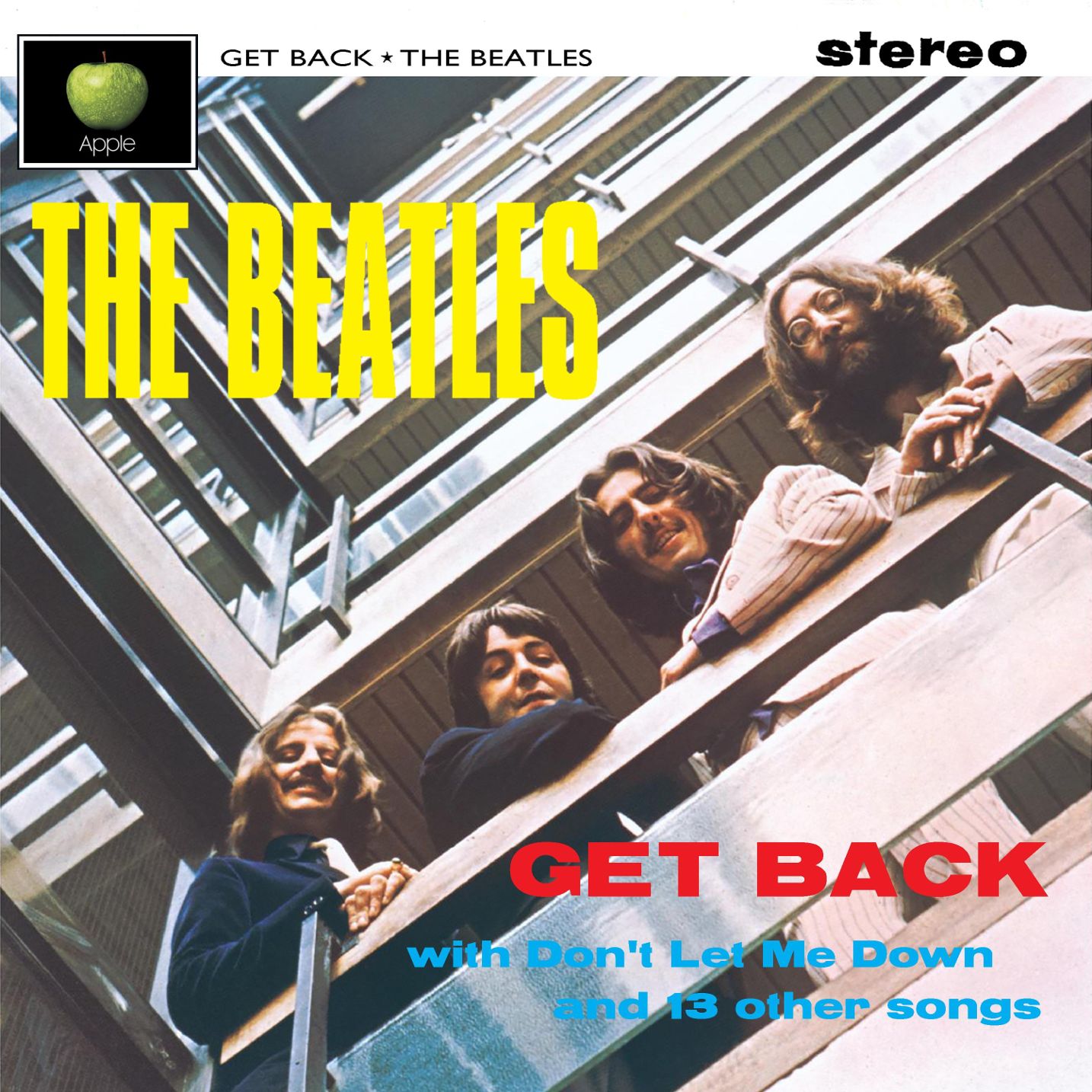 Thirteen stereo mixes of January 1969 Beatles songs were prepared on this day. Two of these were of the song “Get Back,” one being the entire version minus the coda that they neglected to perform (as detailed above) as recorded on January 27th, 1969 at Apple Studios. The second mix of “Get Back” created on this day is presumably of a section of the coda that was recorded on January 28th, 1969 to be utilized as “Get Back (reprise)” on Glyn Johns' proposed “Get Back” album. No mono mixes were required at this point due to mono record releases having been phased out of the marketplace by 1969. Thirteen stereo mixes of January 1969 Beatles songs were prepared on this day. Two of these were of the song “Get Back,” one being the entire version minus the coda that they neglected to perform (as detailed above) as recorded on January 27th, 1969 at Apple Studios. The second mix of “Get Back” created on this day is presumably of a section of the coda that was recorded on January 28th, 1969 to be utilized as “Get Back (reprise)” on Glyn Johns' proposed “Get Back” album. No mono mixes were required at this point due to mono record releases having been phased out of the marketplace by 1969.
 Glyn Johns continued to create stereo mixes for this proposed album for the next three days. However, since it had been a long seven-and-a-half months since “Hey Jude,” The Beatles' previous single, had been released, there was a dire need for a follow-up. Therefore, engineer Jeff Jarratt was commissioned to EMI Studios to create a mix of the song that was decided to be the next Beatles single, “Get Back.” It has been suggested that producer George Martin oversaw these proceedings on this day but this has not been verified. Four mono mixes were created, the fourth mix undoubtedly being deemed as "best," acetate discs being cut directly afterward. Glyn Johns continued to create stereo mixes for this proposed album for the next three days. However, since it had been a long seven-and-a-half months since “Hey Jude,” The Beatles' previous single, had been released, there was a dire need for a follow-up. Therefore, engineer Jeff Jarratt was commissioned to EMI Studios to create a mix of the song that was decided to be the next Beatles single, “Get Back.” It has been suggested that producer George Martin oversaw these proceedings on this day but this has not been verified. Four mono mixes were created, the fourth mix undoubtedly being deemed as "best," acetate discs being cut directly afterward.
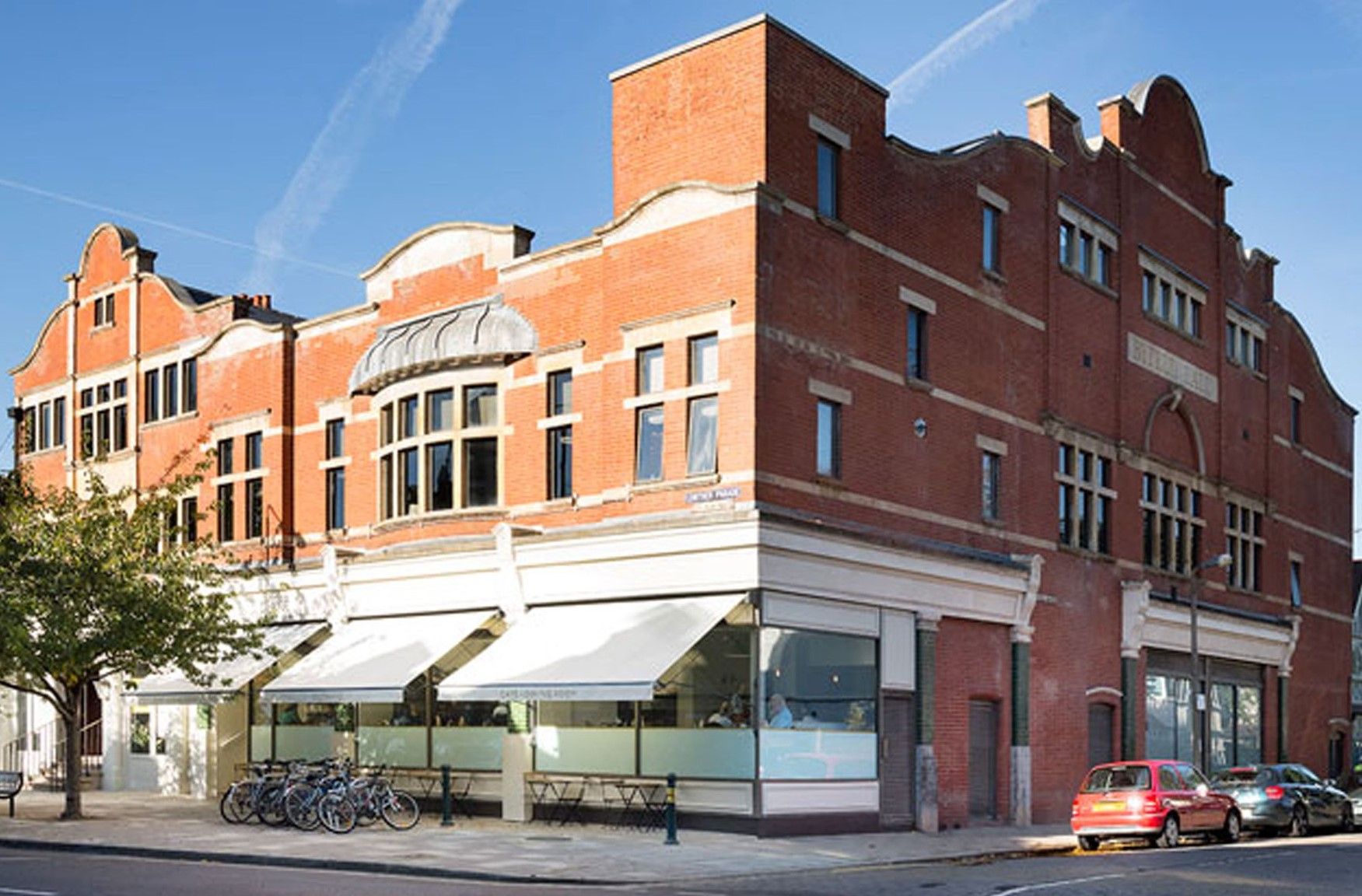 One of the acetate discs got into the hands of UK disc jockeys John Peel and Alan Freeman who proceeded to play the song on the air on April 6th, 1969. They had also received official information that this new Beatles 45 would be rush-released by Apple five days later, or on April 11th, this also being annouced on their show. Paul became aware of this broadcast and expressed concern that the mix of “Get Back” on this acetate disc wasn't good enough for official release. The edit of the main body of the song from January 27th, 1969 and the coda from January 28th, 1969 may not have been contained on this acetate disc as we've come to know it. In order to remedy this situation, Paul quickly booked studio time with Glyn Johns at Olympic Sound Studios the day after this broadcast, April 7th, 1969. Engineer Jerry Boys was present at the control board on this day, producer George Martin's presence not confirmed but possible. One of the acetate discs got into the hands of UK disc jockeys John Peel and Alan Freeman who proceeded to play the song on the air on April 6th, 1969. They had also received official information that this new Beatles 45 would be rush-released by Apple five days later, or on April 11th, this also being annouced on their show. Paul became aware of this broadcast and expressed concern that the mix of “Get Back” on this acetate disc wasn't good enough for official release. The edit of the main body of the song from January 27th, 1969 and the coda from January 28th, 1969 may not have been contained on this acetate disc as we've come to know it. In order to remedy this situation, Paul quickly booked studio time with Glyn Johns at Olympic Sound Studios the day after this broadcast, April 7th, 1969. Engineer Jerry Boys was present at the control board on this day, producer George Martin's presence not confirmed but possible.
 “Only Paul came along,” Jerry Boys remembered about which Beatles were present on that day. He continued: “They'd already done a mono mix of 'Get Back' and had acetates cut and did not like it. We tried it again but it wasn't really happening any better and when we went to compare the two we hit a problem because Paul did not have a tape of that first mix with him, just an acetate. Paul and Glyn (Johns) were very concerned with what the new mix was going to sound like on a cheap record player. Purely by chance, I happened to have a cheap record player in the back of my car, which I'd brought along to Olympic to have someone repair. We had an acetate cut from the new mix and then, using my record player, we were able to decide which of the two mixes was better. So the very first playing of the 'Get Back' single, which sold millions, was on my little player!” “Only Paul came along,” Jerry Boys remembered about which Beatles were present on that day. He continued: “They'd already done a mono mix of 'Get Back' and had acetates cut and did not like it. We tried it again but it wasn't really happening any better and when we went to compare the two we hit a problem because Paul did not have a tape of that first mix with him, just an acetate. Paul and Glyn (Johns) were very concerned with what the new mix was going to sound like on a cheap record player. Purely by chance, I happened to have a cheap record player in the back of my car, which I'd brought along to Olympic to have someone repair. We had an acetate cut from the new mix and then, using my record player, we were able to decide which of the two mixes was better. So the very first playing of the 'Get Back' single, which sold millions, was on my little player!”
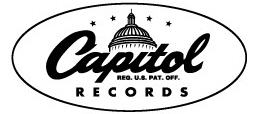 Also created on this day was a new mono mix of “Don't Let Me Down” which would be utilized as the b-side of their new single. Also created during this session were stereo mixes of both songs to be sent to Capitol Records in America to be issued as the second Beatles Apple single, their first to be issued in stereo. The mono mixes of these two songs were contained on the UK single, this being the final mono single in their home country. Also created on this day was a new mono mix of “Don't Let Me Down” which would be utilized as the b-side of their new single. Also created during this session were stereo mixes of both songs to be sent to Capitol Records in America to be issued as the second Beatles Apple single, their first to be issued in stereo. The mono mixes of these two songs were contained on the UK single, this being the final mono single in their home country.
 On May 28th, 1969, George Martin was hired to oversee the master tape banding and compilation of the proposed LP “Get Back” as an accompaniment to the newly released “Get Back” single. Engineer Glyn Johns, who was primarily responsible for creating the mixes for most of the tracks on this proposed Beatles album, was also present and acting as engineer along with Steve Vaughan as his 2nd engineer. George Harrison was also present on this day, being the only Beatle in the country at that time. This session, starting with creating a stereo mix of the song “Let It Be,” occurred in Studio One of Olympic Sound Studios. On May 28th, 1969, George Martin was hired to oversee the master tape banding and compilation of the proposed LP “Get Back” as an accompaniment to the newly released “Get Back” single. Engineer Glyn Johns, who was primarily responsible for creating the mixes for most of the tracks on this proposed Beatles album, was also present and acting as engineer along with Steve Vaughan as his 2nd engineer. George Harrison was also present on this day, being the only Beatle in the country at that time. This session, starting with creating a stereo mix of the song “Let It Be,” occurred in Studio One of Olympic Sound Studios.
 The stereo single version of “Get Back,” which had been released about a month-and-a-half earlier, had been included on this LP as the final song of side one. In addition to this, the above detailed “Get Back (reprise)” mix that was prepared by Glyn Johns on March 10th, 1969 was included as the final track of side two. As history reveals, the album was never released in this configuration. The stereo single version of “Get Back,” which had been released about a month-and-a-half earlier, had been included on this LP as the final song of side one. In addition to this, the above detailed “Get Back (reprise)” mix that was prepared by Glyn Johns on March 10th, 1969 was included as the final track of side two. As history reveals, the album was never released in this configuration.
 With the filmed footage being prepared for release as a feature movie in January of 1970, Glyn Johns was once again commissioned to assemble a new version of the “Get Back” album on January 5th, 1970 in Studio One of Olympic Sound Studios. The intention this time was to release the album as a sountrack to accompany the film, two additional songs included therein because of their inclusion in the movie, these being “Across The Universe” and the recently recorded “I Me Mine.” As before, however, the released single version of the song “Get Back” was in the running order as well as the previously mixed “Get Back (reprise),” the latter rounding out side two once again. With the filmed footage being prepared for release as a feature movie in January of 1970, Glyn Johns was once again commissioned to assemble a new version of the “Get Back” album on January 5th, 1970 in Studio One of Olympic Sound Studios. The intention this time was to release the album as a sountrack to accompany the film, two additional songs included therein because of their inclusion in the movie, these being “Across The Universe” and the recently recorded “I Me Mine.” As before, however, the released single version of the song “Get Back” was in the running order as well as the previously mixed “Get Back (reprise),” the latter rounding out side two once again.
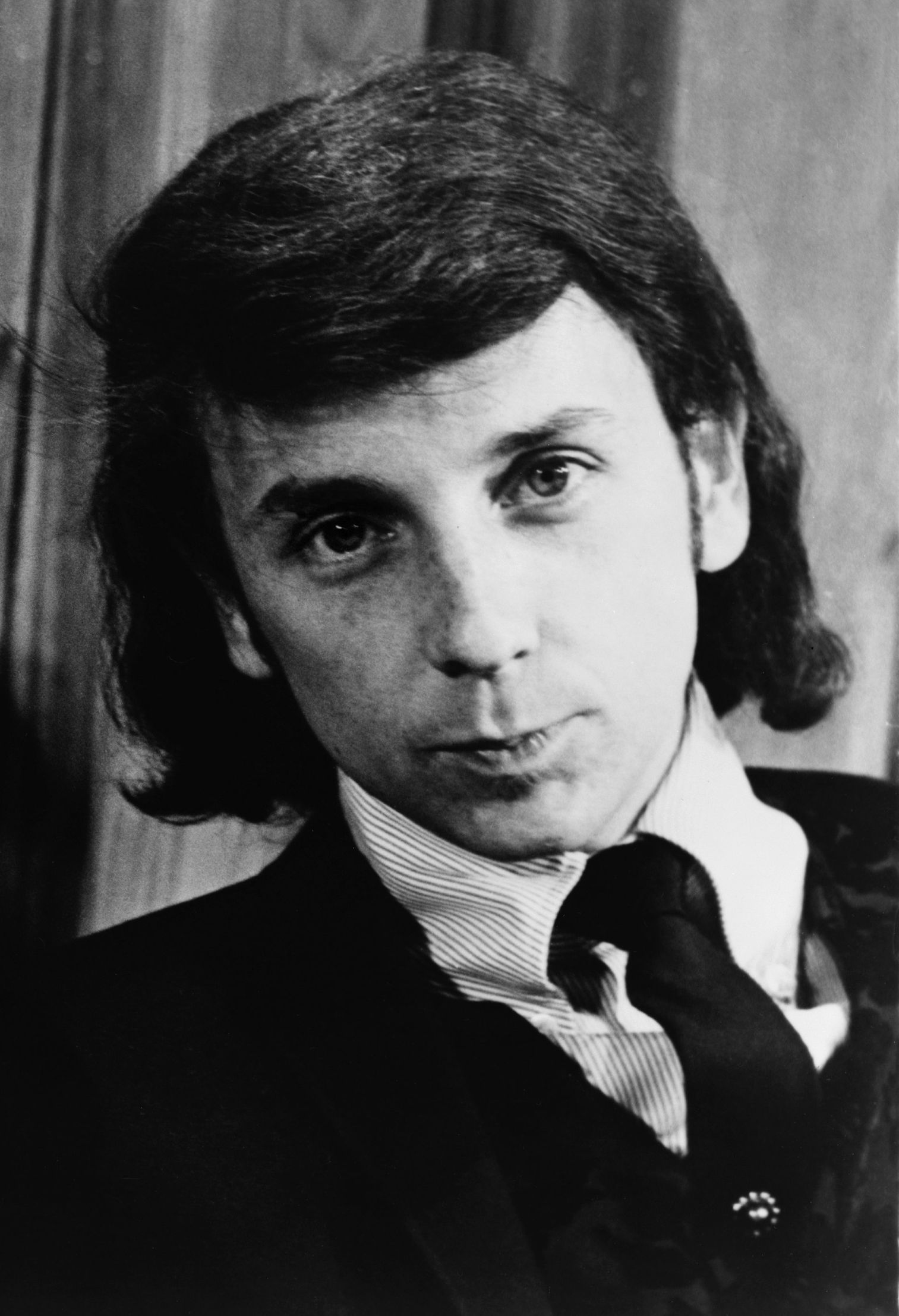 With the release of the Beatles' film being further delayed, an executive decision was made to recruit legendary American producer Phil Spector to assemble the soundtrack album for the “Let It Be” film (as it was now re-titled) in any way that he chose to. On his third day of mixing for the album, March 26th, 1970, he and engineers Peter Bown and Roger Ferris entered Room 4 of EMI Studios to create new mixes to four Beatles songs, “Get Back” being one of them. With the release of the Beatles' film being further delayed, an executive decision was made to recruit legendary American producer Phil Spector to assemble the soundtrack album for the “Let It Be” film (as it was now re-titled) in any way that he chose to. On his third day of mixing for the album, March 26th, 1970, he and engineers Peter Bown and Roger Ferris entered Room 4 of EMI Studios to create new mixes to four Beatles songs, “Get Back” being one of them.
 Going back to the original version from the January 27th, 1969 Apple Studios session tape that produced the released single, Phil Spector decided to include John's ad libbed “Sweet Loretta Fart...” vocalizations, as well as other brief dialog and instrumental sounds that preceeded the perfected take, as the intro to his new mix of “Get Back.” In the spirit of the overall impromptu feel of the project that he was instructed to include, Phil Spector crossfaded this spontaneous chatter and sounds that were caught on tape with the beginning measures of the actual song. Since the coda was mistakenly omited from this actual performance, Phil Spector felt obliged to leave it as it was and not edit in a coda from the January 18th, 1969 session as fans were used to hearing from the released single. Five stereo mixes of "Get Back" were made, mixes three and five then being edited together for creating “remix stereo 3,” which is what appeared on the released soundtrack album. Going back to the original version from the January 27th, 1969 Apple Studios session tape that produced the released single, Phil Spector decided to include John's ad libbed “Sweet Loretta Fart...” vocalizations, as well as other brief dialog and instrumental sounds that preceeded the perfected take, as the intro to his new mix of “Get Back.” In the spirit of the overall impromptu feel of the project that he was instructed to include, Phil Spector crossfaded this spontaneous chatter and sounds that were caught on tape with the beginning measures of the actual song. Since the coda was mistakenly omited from this actual performance, Phil Spector felt obliged to leave it as it was and not edit in a coda from the January 18th, 1969 session as fans were used to hearing from the released single. Five stereo mixes of "Get Back" were made, mixes three and five then being edited together for creating “remix stereo 3,” which is what appeared on the released soundtrack album.
 The next day, March 27th, 1970, saw Phil Spector back in Room 4 of EMI Studios for additional work on the "Let It Be" soundtrack album, this time with both engineers Mike Sheady and Roger Ferris. After creating a stereo mix for the recording that had become known as “Dig It,” they assembled eight bits of recorded dialog for random insertion into the LP. One of these miscellaneous bits was chosen to be crossfaded with the ending of the song “Get Back,” thus closing the entire album. As the song concluded, Phil Spector decided to crossfade this with the closing moments of the rooftop concert, this including the applause from onlookers, Paul thanking Maureen Starkey for her cheering, and Lennon's comedic “...hope we passed the audition” phrase. The next day, March 27th, 1970, saw Phil Spector back in Room 4 of EMI Studios for additional work on the "Let It Be" soundtrack album, this time with both engineers Mike Sheady and Roger Ferris. After creating a stereo mix for the recording that had become known as “Dig It,” they assembled eight bits of recorded dialog for random insertion into the LP. One of these miscellaneous bits was chosen to be crossfaded with the ending of the song “Get Back,” thus closing the entire album. As the song concluded, Phil Spector decided to crossfade this with the closing moments of the rooftop concert, this including the applause from onlookers, Paul thanking Maureen Starkey for her cheering, and Lennon's comedic “...hope we passed the audition” phrase.
 A curious one-minute ad-lib recording made by John on electric guitar, Ringo on drums and also Klaus Voormann on bass on September 27th, 1970 at EMI Studios during the making of Lennon's "Plastic Ono Band" LP has surfaced that resembles "Get Back" to some Lennon fans. This Lennon / Ono / Phil Spector production has been labeled "Get Back (Jam)" when included on the 50th Anniversary box set released in 2021 as detailed below. A curious one-minute ad-lib recording made by John on electric guitar, Ringo on drums and also Klaus Voormann on bass on September 27th, 1970 at EMI Studios during the making of Lennon's "Plastic Ono Band" LP has surfaced that resembles "Get Back" to some Lennon fans. This Lennon / Ono / Phil Spector production has been labeled "Get Back (Jam)" when included on the 50th Anniversary box set released in 2021 as detailed below.
 George Martin and engineer Geoff Emerick pulled out the master tape of the rooftop concert of January 30th, 1969 sometime in 1996 to prepare a new mix of “Get Back” to be included on the compilation set “Anthology 3.” They decided to create a mix of the final rooftop performance of the song, this being the final selection The Beatles ever performed live, complete with evidence of police presence and Paul's lyrical ad lib about them being “arrested” for “playing on the roofs again.” George Martin and engineer Geoff Emerick pulled out the master tape of the rooftop concert of January 30th, 1969 sometime in 1996 to prepare a new mix of “Get Back” to be included on the compilation set “Anthology 3.” They decided to create a mix of the final rooftop performance of the song, this being the final selection The Beatles ever performed live, complete with evidence of police presence and Paul's lyrical ad lib about them being “arrested” for “playing on the roofs again.”
 Then, sometime during 2003, the engineering team of Paul Hicks, Guy Massey and Allan Rouse pulled out the master tape of “Get Back” from January 27th, 1969 for creating a vibrant new mix of the same take that had appeared on the single and soundtrack album. This new mix was featured on the LP “Let It Be...Naked” that was released that year. As Phil Spector had done for the soundtrack LP, this new 2003 mix concluded just as the actual performance did back then, minus the coda with McCartney's ad libbed "your momma's waiting for you..." vocal line. some Beatles' enthusiasts were of the opinion that this engineering team cut this performance short because this coda was missing, but in actuality they presented the ultimate “Get Back” performance precisely how the musicians played it on that day. Then, sometime during 2003, the engineering team of Paul Hicks, Guy Massey and Allan Rouse pulled out the master tape of “Get Back” from January 27th, 1969 for creating a vibrant new mix of the same take that had appeared on the single and soundtrack album. This new mix was featured on the LP “Let It Be...Naked” that was released that year. As Phil Spector had done for the soundtrack LP, this new 2003 mix concluded just as the actual performance did back then, minus the coda with McCartney's ad libbed "your momma's waiting for you..." vocal line. some Beatles' enthusiasts were of the opinion that this engineering team cut this performance short because this coda was missing, but in actuality they presented the ultimate “Get Back” performance precisely how the musicians played it on that day.
 An added CD was contained within the “Let It Be...Naked” album entitled “Fly On The Wall” featuring candid dialog and musical excerpts from their January 1969 rehearsals. Two bits of “Get Back” rehearsals were included therein, the first being a 15 second segment of the band rehearsing the proposed crashing introduction to the song from January 10th, 1969, this idea eventually being dropped. The second excerpt of “Get Back” was of Paul singing through a verse and chorus of the song while playing an acoustic guitar in a more subdued tempo while Lennon fiddled around on slide guitar. This 32-second segment may very well have been performed at Apple Studios on January 25th, 1969, the same day that they recorded “For You Blue” with John playing the Hofner lap-steel guitar that was present in the studio on that day. An added CD was contained within the “Let It Be...Naked” album entitled “Fly On The Wall” featuring candid dialog and musical excerpts from their January 1969 rehearsals. Two bits of “Get Back” rehearsals were included therein, the first being a 15 second segment of the band rehearsing the proposed crashing introduction to the song from January 10th, 1969, this idea eventually being dropped. The second excerpt of “Get Back” was of Paul singing through a verse and chorus of the song while playing an acoustic guitar in a more subdued tempo while Lennon fiddled around on slide guitar. This 32-second segment may very well have been performed at Apple Studios on January 25th, 1969, the same day that they recorded “For You Blue” with John playing the Hofner lap-steel guitar that was present in the studio on that day.
 George Martin returned to the original tape of "Get Back" once more sometime between 2004 and 2006 along with his son Giles Martin to create a new mash-up of the song to be included on the album "Beatles Love." The intro of the song was extended to incorporate various elements of other Beatles tracks, such as the introductory guitar chord of "A Hard Day's Night" and various sounds from "Sgt. Pepper (Reprise)," "A Day In The Life" and "The End" throughout the track, while the second verse is removed entirely. George Martin returned to the original tape of "Get Back" once more sometime between 2004 and 2006 along with his son Giles Martin to create a new mash-up of the song to be included on the album "Beatles Love." The intro of the song was extended to incorporate various elements of other Beatles tracks, such as the introductory guitar chord of "A Hard Day's Night" and various sounds from "Sgt. Pepper (Reprise)," "A Day In The Life" and "The End" throughout the track, while the second verse is removed entirely.
 Sometime in 2021, Giles Martin and engineer Sam Okell returned to the master tapes of "Get Back" to create a new mix for inclusion on an Anniversary version of the "Let It Be" album available in various editions. They also created two additional stereo mixes of the song, the first being "take eight" as recorded on January 27th, 1969 in Apple Studios, the second being "take 19" from January 28th, 1969, this being the full recording of what was edited onto the last moments of the originally released single. Two other versions of "Get Back" were remastered at this time as well, the first being the actual single version of the song, the second being a later portion of "take 19" that was designated "Get Back (Reprise)" on the proposed Glyn Johns "Get Back" album from 1969. Sometime in 2021, Giles Martin and engineer Sam Okell returned to the master tapes of "Get Back" to create a new mix for inclusion on an Anniversary version of the "Let It Be" album available in various editions. They also created two additional stereo mixes of the song, the first being "take eight" as recorded on January 27th, 1969 in Apple Studios, the second being "take 19" from January 28th, 1969, this being the full recording of what was edited onto the last moments of the originally released single. Two other versions of "Get Back" were remastered at this time as well, the first being the actual single version of the song, the second being a later portion of "take 19" that was designated "Get Back (Reprise)" on the proposed Glyn Johns "Get Back" album from 1969.
 Surprisingly, George Harrison was the first Beatle to re-record the song "Get Back." In actuality, during recording sessions in London sometime between September 1969 and May 1970 for R&B singer Doris Troy, the album's producer George Harrison vocally ran through "Get Back" as a demonstration for his latest client to hear. This song was chosen by Doris Troy for inclusion on her self-titled Apple album, the result ending up as the b-side of her second single from the album, "Jacob's Ladder," in September of 1970. Surprisingly, George Harrison was the first Beatle to re-record the song "Get Back." In actuality, during recording sessions in London sometime between September 1969 and May 1970 for R&B singer Doris Troy, the album's producer George Harrison vocally ran through "Get Back" as a demonstration for his latest client to hear. This song was chosen by Doris Troy for inclusion on her self-titled Apple album, the result ending up as the b-side of her second single from the album, "Jacob's Ladder," in September of 1970.
 With a star-studded background group that possibly included Ringo, Billy Preston, Eric Clapton, Steven Stills, Jim Gordon among various others, George ad libbed a vocal demo that has appeared in later years on various bootleg releases. Harrison pushes his way through the chorus a few times as well as the third verse, adding in whatever popped into his head at the moment. Encouraged by assistant Mal Evans being present in his usual gopher role, George stated, "Mal got a mop and another glass of orange juice." Since George was in the habit of adding in lyrics of other songs (see "It's All Too Much"), he ended his vocal performance at this time with an altered quote from the Delaney & Bonnie composition "All We Really Want To Do": "Now we're not saying that we're all the best / and we're not trying to say that we're like the rest...make the load a little lighter." With a star-studded background group that possibly included Ringo, Billy Preston, Eric Clapton, Steven Stills, Jim Gordon among various others, George ad libbed a vocal demo that has appeared in later years on various bootleg releases. Harrison pushes his way through the chorus a few times as well as the third verse, adding in whatever popped into his head at the moment. Encouraged by assistant Mal Evans being present in his usual gopher role, George stated, "Mal got a mop and another glass of orange juice." Since George was in the habit of adding in lyrics of other songs (see "It's All Too Much"), he ended his vocal performance at this time with an altered quote from the Delaney & Bonnie composition "All We Really Want To Do": "Now we're not saying that we're all the best / and we're not trying to say that we're like the rest...make the load a little lighter."
 The first time McCartney recorded "Get Back" without The Beatles was a live version at Webley Arena in London on June 20th, 1986 for the Prince's Trust Rock Gala with Tina Turner, Elton John among various others, the results being released worldwide on the album "Recorded Highlights Of The Prince's Trust 10th Anniversary Birthday Party." The first time McCartney recorded "Get Back" without The Beatles was a live version at Webley Arena in London on June 20th, 1986 for the Prince's Trust Rock Gala with Tina Turner, Elton John among various others, the results being released worldwide on the album "Recorded Highlights Of The Prince's Trust 10th Anniversary Birthday Party."
 The next live Paul McCartney recording of “Get Back” was done on March 13th, 1990 at the Tokyo Dome in Tokyo, Japan, the results being released on both the “Tripping The Live Fantastic” and “Tripping The Live Fantastic: Highlights!” LPs of that year. Next came his June 27th, 2007 performance of the song at Amoeba Music in Hollywood, California, this version available on both the “Amoeba Gig” LP and a British and Irish release entitled “Live In Los Angeles,” the latter being produced in conjunction with “The Mail On Sunday” newspaper. Then came Paul's performance at New York City's Citi Field in July of 2009, this version being included on his “Good Evening New York City” album. The next live Paul McCartney recording of “Get Back” was done on March 13th, 1990 at the Tokyo Dome in Tokyo, Japan, the results being released on both the “Tripping The Live Fantastic” and “Tripping The Live Fantastic: Highlights!” LPs of that year. Next came his June 27th, 2007 performance of the song at Amoeba Music in Hollywood, California, this version available on both the “Amoeba Gig” LP and a British and Irish release entitled “Live In Los Angeles,” the latter being produced in conjunction with “The Mail On Sunday” newspaper. Then came Paul's performance at New York City's Citi Field in July of 2009, this version being included on his “Good Evening New York City” album.
Song Structure and Style
 There are two main versions of the song “Get Back” that have become popular during The Beatles' career; their single release of 1969 and their album release of 1970. Both versions are cherished by music fans for different reasons, but their original single version contains the coda that was edited onto the basic take. This being the case, the format for the single version is somewhat longer than the album version and is a bit more popular due to it topping the singles charts worldwide that year and has also remained a staple on classic radio and streaming platforms till today. There are two main versions of the song “Get Back” that have become popular during The Beatles' career; their single release of 1969 and their album release of 1970. Both versions are cherished by music fans for different reasons, but their original single version contains the coda that was edited onto the basic take. This being the case, the format for the single version is somewhat longer than the album version and is a bit more popular due to it topping the singles charts worldwide that year and has also remained a staple on classic radio and streaming platforms till today.
 For this reason, our analysis will concentrate on the single version released in 1969, this following the format 'verse/ chorus/ solo verse/ chorus/ solo verse/ verse/ chorus/ solo verse/ chorus/ outro verse/ outro chorus' (or ababaababab). Both of the versions feature an instrumental intro as well as two “Beatles breaks,” the first appearing after the second chorus and the second appearing after the fourth chorus, this second "break" concluding the song on the album version. Incidental chatter and sounds begin and conclude the album version, these not appearing on the 45 and therefore not stipulated in the structure of our analysis. For this reason, our analysis will concentrate on the single version released in 1969, this following the format 'verse/ chorus/ solo verse/ chorus/ solo verse/ verse/ chorus/ solo verse/ chorus/ outro verse/ outro chorus' (or ababaababab). Both of the versions feature an instrumental intro as well as two “Beatles breaks,” the first appearing after the second chorus and the second appearing after the fourth chorus, this second "break" concluding the song on the album version. Incidental chatter and sounds begin and conclude the album version, these not appearing on the 45 and therefore not stipulated in the structure of our analysis.
 The four measure intro showcases Ringo's galloping snare beat as it and all the other live instruments fade up in volume to good effect. John and George's electric rhythm guitars chunk away in a style that accents the off beats while Paul thumps out eighth beats on one solitary note and Billy Preston quietly plays chords on electric piano. As the volume swells into the fourth measure, two crashing chords are played by everyone, Ringo's cymbals ringing out to usher in the first verse that follows. The four measure intro showcases Ringo's galloping snare beat as it and all the other live instruments fade up in volume to good effect. John and George's electric rhythm guitars chunk away in a style that accents the off beats while Paul thumps out eighth beats on one solitary note and Billy Preston quietly plays chords on electric piano. As the volume swells into the fourth measure, two crashing chords are played by everyone, Ringo's cymbals ringing out to usher in the first verse that follows.
 A third cymbal crash appears on the downbeat of the first measure of the eight-measure first verse, Paul's lead vocal also beginning on this beat. Ringo's galloping snare beat continues here as it does throughout the entire song. Paul sings solo in this verse but is accentuated by John playing a rising-and-falling guitar lick in-between the two gaps of McCartney's vocal phrases. George and Billy Preston both both keep playing their instruments in a subdued fashion throughout the verse while Paul keeps it simple on bass as well. A third cymbal crash appears on the downbeat of the first measure of the eight-measure first verse, Paul's lead vocal also beginning on this beat. Ringo's galloping snare beat continues here as it does throughout the entire song. Paul sings solo in this verse but is accentuated by John playing a rising-and-falling guitar lick in-between the two gaps of McCartney's vocal phrases. George and Billy Preston both both keep playing their instruments in a subdued fashion throughout the verse while Paul keeps it simple on bass as well.
 The following chorus is also eight measures in length, McCartney still being the only vocalist throughout. Lennon here replaces his chunking rhythm performance with a lead guitar riff that he repeated eight times, one for every measure, altering his lead playing in measures three and seven with the changing chord structure of the song. Ringo kept his galloping snare beat going throughout the chorus but crashes his cymbals accordingly in the fourth measure as a repeat of what we witnessed in the fourth measure of the song's introduction. Paul, George and Billy Preston also reprise the introduction with identical crashing chords. Then in measures five and six, everyone except John performs crashing chords on the “two-and” offbeat, Lennon continuing his guitar riff as if he doesn't even notice the jarring changes in the rhythm of the song. The final portion of his guitar riff in the eighth measure of the chorus is omitted here, only because John needs to properly position his fingers for the guitar solo he is about to perform immediately afterward. Just before he starts it, Paul encourages him by saying, “Get back, JoJo!” The following chorus is also eight measures in length, McCartney still being the only vocalist throughout. Lennon here replaces his chunking rhythm performance with a lead guitar riff that he repeated eight times, one for every measure, altering his lead playing in measures three and seven with the changing chord structure of the song. Ringo kept his galloping snare beat going throughout the chorus but crashes his cymbals accordingly in the fourth measure as a repeat of what we witnessed in the fourth measure of the song's introduction. Paul, George and Billy Preston also reprise the introduction with identical crashing chords. Then in measures five and six, everyone except John performs crashing chords on the “two-and” offbeat, Lennon continuing his guitar riff as if he doesn't even notice the jarring changes in the rhythm of the song. The final portion of his guitar riff in the eighth measure of the chorus is omitted here, only because John needs to properly position his fingers for the guitar solo he is about to perform immediately afterward. Just before he starts it, Paul encourages him by saying, “Get back, JoJo!”
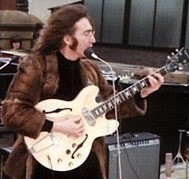 Next comes a second verse that is devoted entirely to John Lennon's guitar solo, this verse also being eight measures in length. As a backdrop to his excellently performed solo is a subdued display from the other four musicians throughout except for what occurs in the fourth measure. The two jarring crashing chords heard in the fourth measure of the previously heard chorus are repeated here in this instrumental verse in both the fourth and eighth measure, Ringo's cymbals ringing out appropriately each time. Paul is quite happy with how Lennon, not usually the lead guitarist, is performing his solo, this being exemplified with his exclamation “Go home!” in the sixth measure, this phrase being similar to the musical expression “bring it home” as heard in popular '50s and '60s recordings. Next comes a second verse that is devoted entirely to John Lennon's guitar solo, this verse also being eight measures in length. As a backdrop to his excellently performed solo is a subdued display from the other four musicians throughout except for what occurs in the fourth measure. The two jarring crashing chords heard in the fourth measure of the previously heard chorus are repeated here in this instrumental verse in both the fourth and eighth measure, Ringo's cymbals ringing out appropriately each time. Paul is quite happy with how Lennon, not usually the lead guitarist, is performing his solo, this being exemplified with his exclamation “Go home!” in the sixth measure, this phrase being similar to the musical expression “bring it home” as heard in popular '50s and '60s recordings.
 Next comes a second chorus, this chorus spanning out to ten measures in length due to the addition of a “Beatles break” as described below. The first eight measures, however, are similar to the first chorus, the crashing chord accents appearing here as well. Lennon's focus this time is not on guitar riffs as we hear in the previous chorus but instead on a lower harmony to Paul's lead vocal, falling back to playing rhythm guitar during this chorus. I'd like to point out here that Lennon is obviously thriving as a true artist during their performance of this song, changing from rhythm to lead guitarist, playing intricate guitar riffs during some choruses, and throwing in a harmony vocal as well. He had been caught on tape during these sessions saying that he thought of The Beatles as a durable rock'n'roll band that performed best during their formative years at the Cavern Club and as well as in Hamburg. With “Get Back,” he was recapturing their celebrated past. Next comes a second chorus, this chorus spanning out to ten measures in length due to the addition of a “Beatles break” as described below. The first eight measures, however, are similar to the first chorus, the crashing chord accents appearing here as well. Lennon's focus this time is not on guitar riffs as we hear in the previous chorus but instead on a lower harmony to Paul's lead vocal, falling back to playing rhythm guitar during this chorus. I'd like to point out here that Lennon is obviously thriving as a true artist during their performance of this song, changing from rhythm to lead guitarist, playing intricate guitar riffs during some choruses, and throwing in a harmony vocal as well. He had been caught on tape during these sessions saying that he thought of The Beatles as a durable rock'n'roll band that performed best during their formative years at the Cavern Club and as well as in Hamburg. With “Get Back,” he was recapturing their celebrated past.
 The added ninth and tenth measures consist of the first of two “Beatles breaks” found in the song, the first one keeping within the flow of the performance (unlike the second). With the group's crashing chord and Ringo's ringing cymbal on the anticipated downbeat of the ninth measure, Billy Preston's presence is now felt for the first time, his slow descending chords being of primary focus in these two measures. With the volume of the song decreasing at this point, Ringo and Paul bring it back in the second half of the tenth measure. Ringo performing an innovative left-handed drum fill while McCartney spurs Billy Preston on for his upcoming solo by stating, “Get back, Joe!” The added ninth and tenth measures consist of the first of two “Beatles breaks” found in the song, the first one keeping within the flow of the performance (unlike the second). With the group's crashing chord and Ringo's ringing cymbal on the anticipated downbeat of the ninth measure, Billy Preston's presence is now felt for the first time, his slow descending chords being of primary focus in these two measures. With the volume of the song decreasing at this point, Ringo and Paul bring it back in the second half of the tenth measure. Ringo performing an innovative left-handed drum fill while McCartney spurs Billy Preston on for his upcoming solo by stating, “Get back, Joe!”
 Another instrumental verse is next, this being eight measures long featuring Billy Preston's excellent self-composed solo. The Beatles play energetically but as a rhythmic backdrop in order to allow their guest keyboardist to shine. They add in their jarring chords from the fourth measure of the second chorus, this time in measures four and eight. In this verse's eighth measure, they all hit it a little harder due to it being a segue into the next verse, this one being the second and final vocal verse of the entire song. Another instrumental verse is next, this being eight measures long featuring Billy Preston's excellent self-composed solo. The Beatles play energetically but as a rhythmic backdrop in order to allow their guest keyboardist to shine. They add in their jarring chords from the fourth measure of the second chorus, this time in measures four and eight. In this verse's eighth measure, they all hit it a little harder due to it being a segue into the next verse, this one being the second and final vocal verse of the entire song.
 This verse, which is also eight measures long, is nearly identical to the first vocal verse, John's guitar riffs and all. Other than different lyrics, the only other alteration from the first vocal verse is George mistakenly playing the two jarring chords in the eighth measure, this now appearing as a juxtaposition with John's intricate but ad libbed lead guitar flourish. This is followed by another chorus, this being nearly identical to the first chorus instrumentally, ending with Paul's ad lib "Get back, Loretta!" as encouragement for John's upcoming solo. This verse, which is also eight measures long, is nearly identical to the first vocal verse, John's guitar riffs and all. Other than different lyrics, the only other alteration from the first vocal verse is George mistakenly playing the two jarring chords in the eighth measure, this now appearing as a juxtaposition with John's intricate but ad libbed lead guitar flourish. This is followed by another chorus, this being nearly identical to the first chorus instrumentally, ending with Paul's ad lib "Get back, Loretta!" as encouragement for John's upcoming solo.
 Yet another instrumental verse appears next, this one being handled by Lennon once again. Interestingly, Paul injects a high-pitched vocal “ooh” on the “two-and” offbeat of the first measure of this instrumental verse, his vocalist hijinks being at an all-time high during the numerous takes of this song during these sessions. Lennon's previous guitar solo is repeated here but with various ad libs that differentiate it from the first solo, especially in measures four, seven and eight. The instrumental backing from the other Beatles are primarily as heard in Lernnon's first solo verse, Ringo's crashing cymbals in the eighth measure being louder to bring in the climactic chorus that follows. Paul reigns everyone in for this chorus by exclaiming “Go home!” in measure eight. Yet another instrumental verse appears next, this one being handled by Lennon once again. Interestingly, Paul injects a high-pitched vocal “ooh” on the “two-and” offbeat of the first measure of this instrumental verse, his vocalist hijinks being at an all-time high during the numerous takes of this song during these sessions. Lennon's previous guitar solo is repeated here but with various ad libs that differentiate it from the first solo, especially in measures four, seven and eight. The instrumental backing from the other Beatles are primarily as heard in Lernnon's first solo verse, Ringo's crashing cymbals in the eighth measure being louder to bring in the climactic chorus that follows. Paul reigns everyone in for this chorus by exclaiming “Go home!” in measure eight.
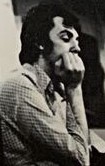 This fourth chorus brings everyone's playing to a fever pitch, the entire group performing at their loudest and with dynamic energy. This in itself may be the reason why this take was chosen as best for release as being the next Beatles single and thereafter for the soundtrack album. Paul's vocalization in this chorus is performed with fervor and intensity, this mimicking the power of all five musicians, Ringo's energetic drum work spurring the rest of them on. The accented crashing chords and cymbals of previous choruses are heard here, not only in measures five and six as before, but in measures one and two as well. Also, the two iconic power chords that were heard in the introduction of the song and in the fourth measure of the previous choruses are here replaced by a syncopated crashing chord on the “two-and” beat of measure four. This fourth chorus brings everyone's playing to a fever pitch, the entire group performing at their loudest and with dynamic energy. This in itself may be the reason why this take was chosen as best for release as being the next Beatles single and thereafter for the soundtrack album. Paul's vocalization in this chorus is performed with fervor and intensity, this mimicking the power of all five musicians, Ringo's energetic drum work spurring the rest of them on. The accented crashing chords and cymbals of previous choruses are heard here, not only in measures five and six as before, but in measures one and two as well. Also, the two iconic power chords that were heard in the introduction of the song and in the fourth measure of the previous choruses are here replaced by a syncopated crashing chord on the “two-and” beat of measure four.
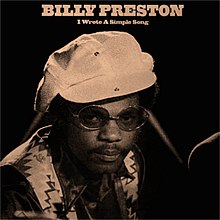 It can arguably be stated that this fourth chorus is also ten measures long as the second chorus was, complete with an abbreviated rendition of Billy Preston's descending electric piano riff as heard the first time around. However, due to this version being the conclusion of this actual performance on January 27th, 1969, the meter of the song is here lost for this second “Beatles break,” the only elements filling this gap being some noises (like Harrison suggesting "Night Nurse" for Paul) and McCartney's “Oooooh!” It can arguably be stated that this fourth chorus is also ten measures long as the second chorus was, complete with an abbreviated rendition of Billy Preston's descending electric piano riff as heard the first time around. However, due to this version being the conclusion of this actual performance on January 27th, 1969, the meter of the song is here lost for this second “Beatles break,” the only elements filling this gap being some noises (like Harrison suggesting "Night Nurse" for Paul) and McCartney's “Oooooh!”
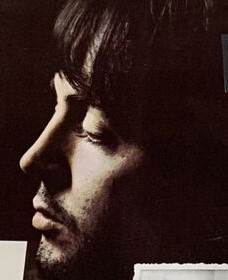 Just when one would think that the performance was now complete (as it was in reality), Ringo brings it back in with another innovative left-handed drum fill direct from a January 28th, 1969 performance of the song. What we now hear is a repeat of the final verse and chorus which is primarily an identical performance but with less intensity. What does become the primary focus is Paul's vocal work, the verse that features his iconic “high heel shoes...low neck sweater” improvisation and a very spirited ad lib of the final chorus as it fades out. Of note here is Paul adding the word “home” to his otherwise usual phrase “get back Loretta” during all other documented takes of the song during these late-January sessions. As the song begins to extend to another chorus on the single rendition, Paul's final vocalization is “JoJo,” this exact utterance also being heard during the fade-in on “Get Back (reprise)” from both proposed “Get Back" albums. Just when one would think that the performance was now complete (as it was in reality), Ringo brings it back in with another innovative left-handed drum fill direct from a January 28th, 1969 performance of the song. What we now hear is a repeat of the final verse and chorus which is primarily an identical performance but with less intensity. What does become the primary focus is Paul's vocal work, the verse that features his iconic “high heel shoes...low neck sweater” improvisation and a very spirited ad lib of the final chorus as it fades out. Of note here is Paul adding the word “home” to his otherwise usual phrase “get back Loretta” during all other documented takes of the song during these late-January sessions. As the song begins to extend to another chorus on the single rendition, Paul's final vocalization is “JoJo,” this exact utterance also being heard during the fade-in on “Get Back (reprise)” from both proposed “Get Back" albums.
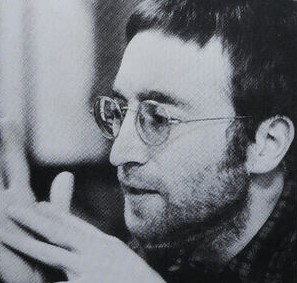 "I played the solo on that," John Lennon had stated in an interview when asked about the song "Get Back." "When Paul was feeling kindly, he would give me a solo. Maybe if he was feeling guilty that he had most of the a-sides or something, he'd give me a solo. I think George produces some beautiful guitar playing, but I think he's too hung up to really let go." "I played the solo on that," John Lennon had stated in an interview when asked about the song "Get Back." "When Paul was feeling kindly, he would give me a solo. Maybe if he was feeling guilty that he had most of the a-sides or something, he'd give me a solo. I think George produces some beautiful guitar playing, but I think he's too hung up to really let go."
American Releases
 “Get Back” was originally released in the US, as well as in most of the world, on May 5th, 1969, this now being an approximate ten month's gap from The Beatles' “Hey Jude” single release back in August,1968. The long wait ensured that the “Get Back” single would be well-received, this resulting in the a-side rushing to the #1 spot on all of the US charts, topping the Billboard Hot 100 for five weeks straight. This release was so popular that its b-side, “Don't Let Me Down,” even appeared for four weeks on the same US Billboard singles chart, peaking at a respectable #35. Interestingly, this was the first Beatles single to be released in stereo in America, mono records then in the process of being phased out entirely. “Get Back” was originally released in the US, as well as in most of the world, on May 5th, 1969, this now being an approximate ten month's gap from The Beatles' “Hey Jude” single release back in August,1968. The long wait ensured that the “Get Back” single would be well-received, this resulting in the a-side rushing to the #1 spot on all of the US charts, topping the Billboard Hot 100 for five weeks straight. This release was so popular that its b-side, “Don't Let Me Down,” even appeared for four weeks on the same US Billboard singles chart, peaking at a respectable #35. Interestingly, this was the first Beatles single to be released in stereo in America, mono records then in the process of being phased out entirely.
 The record label of this single was noteworthy because of both the presence and absence of something unusual. Absent was a producer's credit, all US singles since “Paperback Writer” indicating George Martin as their producer. The first pressings of “Hey Jude” in America also neglected to mention George Martin, so the label of "Get Back" may not have raised many eyebrows. However, with the “Get Back / Don't Let Me Down” 45, none of the later pressings contained a producer's credit either, while later “Hey Jude” pressings corrected the omission of George Martin's name. This may lead to some speculation as to whether George Martin was involved in the production of "Get Back" at all, although documentation in Mark Lewisohn's book "The Beatles Recording Sessions" stipulates his presence on both January 27th and 28th, 1969, when this song was recorded. The record label of this single was noteworthy because of both the presence and absence of something unusual. Absent was a producer's credit, all US singles since “Paperback Writer” indicating George Martin as their producer. The first pressings of “Hey Jude” in America also neglected to mention George Martin, so the label of "Get Back" may not have raised many eyebrows. However, with the “Get Back / Don't Let Me Down” 45, none of the later pressings contained a producer's credit either, while later “Hey Jude” pressings corrected the omission of George Martin's name. This may lead to some speculation as to whether George Martin was involved in the production of "Get Back" at all, although documentation in Mark Lewisohn's book "The Beatles Recording Sessions" stipulates his presence on both January 27th and 28th, 1969, when this song was recorded.
.jpg) One prominent inclusion on every US pressing of the single, however, was the artist listing as “The Beatles with Billy Preston.” In keeping with The Beatles' insistence that the latest songs recorded during this project were to be without overdubs, a credit for the obvious presence of a keyboard on both the a- and b-sides of this single needed to be documented. Billy Preston is thereby the only musician ever to share the artist spotlight with the band on any of their releases (unless you count early Tony Sheridan records such as "My Bonnie"). One prominent inclusion on every US pressing of the single, however, was the artist listing as “The Beatles with Billy Preston.” In keeping with The Beatles' insistence that the latest songs recorded during this project were to be without overdubs, a credit for the obvious presence of a keyboard on both the a- and b-sides of this single needed to be documented. Billy Preston is thereby the only musician ever to share the artist spotlight with the band on any of their releases (unless you count early Tony Sheridan records such as "My Bonnie").
 Their "Get Back / Don't Let Me Down" single was also made available in a new format called "Pocket Discs." A wide assortment of four inch flexible discs had been manufactured by Americom Corporation in New York and then made available to consumers either from store counter displays or through vending machines for 50 cents. While it was claimed that the sound quality of these thin flexible discs was every bit as good as vinyl, the shallow grooves could not contain the same amount of audible information. This "Pocket Disc" single is highly collectible today. Their "Get Back / Don't Let Me Down" single was also made available in a new format called "Pocket Discs." A wide assortment of four inch flexible discs had been manufactured by Americom Corporation in New York and then made available to consumers either from store counter displays or through vending machines for 50 cents. While it was claimed that the sound quality of these thin flexible discs was every bit as good as vinyl, the shallow grooves could not contain the same amount of audible information. This "Pocket Disc" single is highly collectible today.
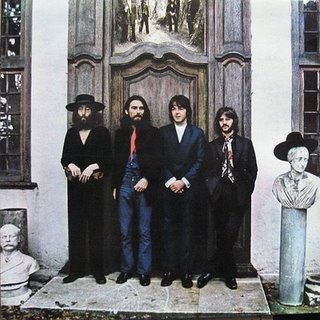 As detailed above, a “Get Back” LP was twice proposed as a companion piece for the single, once in the spring of 1969 (about a month or so after the release of the single) and the second to come out in late January of 1970. Since neither of these came to fruition, its b-side “Don't Let Me Down” was included in the running order of the February 26th, 1970 released US album “Hey Jude” (originally designated to be called “The Beatles Again”) as suggested by manager Allen Klein. He was most likely aware by that time, however, that the January 1969 Beatles sessions were soon to be released on a soundtrack album to a movie subsequently titled “Let It Be,” the song “Get Back” being featured prominently therein. This is why the song “Get Back” was not included on the above mentioned “Hey Jude” album but was held over until the “Let It Be” project would eventually be unveiled. As detailed above, a “Get Back” LP was twice proposed as a companion piece for the single, once in the spring of 1969 (about a month or so after the release of the single) and the second to come out in late January of 1970. Since neither of these came to fruition, its b-side “Don't Let Me Down” was included in the running order of the February 26th, 1970 released US album “Hey Jude” (originally designated to be called “The Beatles Again”) as suggested by manager Allen Klein. He was most likely aware by that time, however, that the January 1969 Beatles sessions were soon to be released on a soundtrack album to a movie subsequently titled “Let It Be,” the song “Get Back” being featured prominently therein. This is why the song “Get Back” was not included on the above mentioned “Hey Jude” album but was held over until the “Let It Be” project would eventually be unveiled.
 Finally, on May 18th, 1970, the long-awaited “Let It Be” soundtrack album was released, the newer Phil Spector mix of “Get Back” being featured here that was much different from the hit single version. All Beatles fans easily noticed that, while the main body of the song sounded identical to what they were used to hearing, impromptu chatter and instrument sounds began and ended the track, while the iconic coda of the song was omitted. Since this album was released roughly a full year after the "Get Back" single hit the record shops, the 'cat was out of the bag' that this was not actually the most current Beatles album but was instead recorded about nineteen months earlier, thus well before the recording of their previously released album "Abbey Road." Finally, on May 18th, 1970, the long-awaited “Let It Be” soundtrack album was released, the newer Phil Spector mix of “Get Back” being featured here that was much different from the hit single version. All Beatles fans easily noticed that, while the main body of the song sounded identical to what they were used to hearing, impromptu chatter and instrument sounds began and ended the track, while the iconic coda of the song was omitted. Since this album was released roughly a full year after the "Get Back" single hit the record shops, the 'cat was out of the bag' that this was not actually the most current Beatles album but was instead recorded about nineteen months earlier, thus well before the recording of their previously released album "Abbey Road."
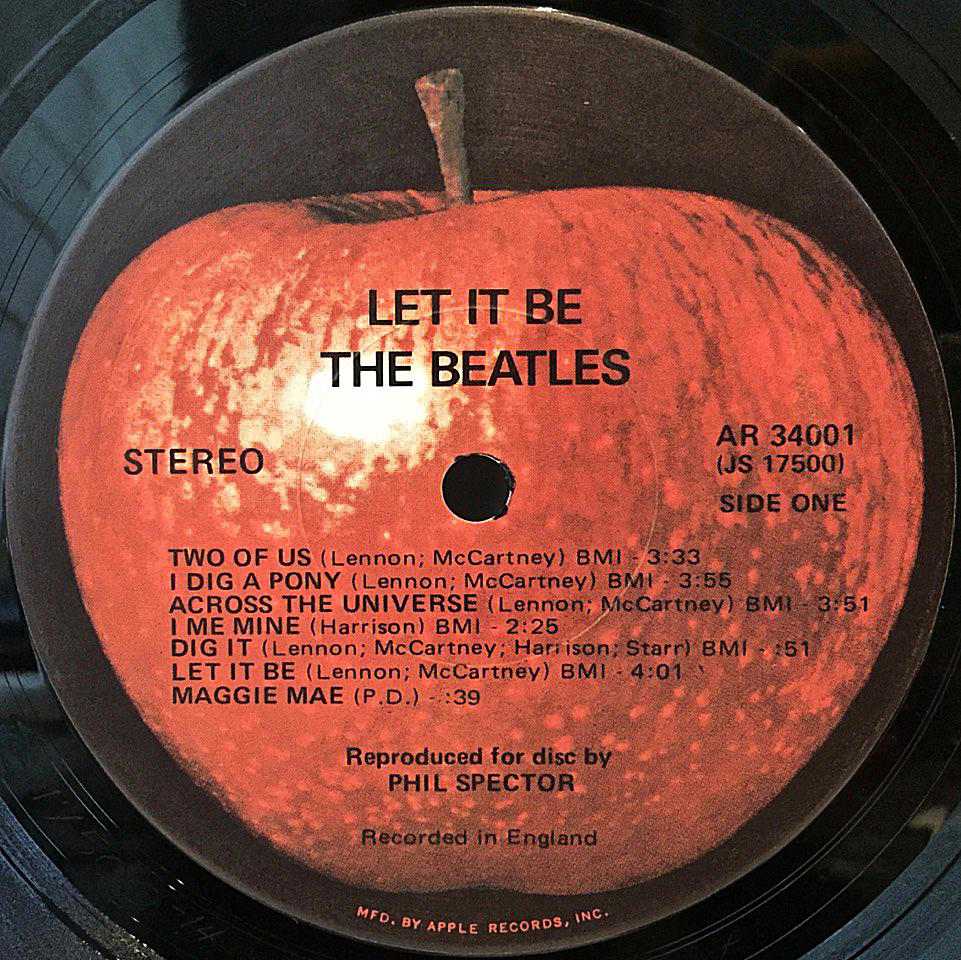 The “Let It Be” album was initially distributed in a gatefold jacket in America, much different to the British released box set with photo book. It spent four weeks in the #1 position on the US Billboard album chart and has sold well over four million copies in America. Since this LP was distributed by United Artists Records upon its initial release (despite having its Red Apple Records label), this company stopped printing this album sometime during the '70s when the record company struggled to keep afloat. While Capitol Records kept all other US Beatles albums in print throughout the '70s, “Let It Be” was the only LP from the group that wasn't legitimately available for a number of years. This was rectified in 1978, however, when Capitol purchased the UA catalog and re-released the “Let It Be” album, this time in a single non-gatefold cover but with a poster. This album first appeared on compact disc on October 10th, 1987, and as a remastered CD on September 9th, 2009. A newly mixed vinyl and CD edition of the LP was then released on October 15th, 2021, as well as a special edition picture disc. The “Let It Be” album was initially distributed in a gatefold jacket in America, much different to the British released box set with photo book. It spent four weeks in the #1 position on the US Billboard album chart and has sold well over four million copies in America. Since this LP was distributed by United Artists Records upon its initial release (despite having its Red Apple Records label), this company stopped printing this album sometime during the '70s when the record company struggled to keep afloat. While Capitol Records kept all other US Beatles albums in print throughout the '70s, “Let It Be” was the only LP from the group that wasn't legitimately available for a number of years. This was rectified in 1978, however, when Capitol purchased the UA catalog and re-released the “Let It Be” album, this time in a single non-gatefold cover but with a poster. This album first appeared on compact disc on October 10th, 1987, and as a remastered CD on September 9th, 2009. A newly mixed vinyl and CD edition of the LP was then released on October 15th, 2021, as well as a special edition picture disc.
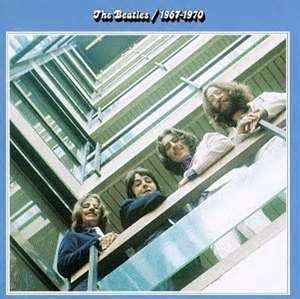 The single version of "Get Back” was included on the April 19th, 1973 released compilation album “The Beatles/1967 – 1970” (aka “The Blue Album.”) This album peaked at #1 on the Billboard album chart and first appeared on compact disc on September 20th, 1993, and then in a remastered condition that was released on August 10th, 2010. The single version of "Get Back” was included on the April 19th, 1973 released compilation album “The Beatles/1967 – 1970” (aka “The Blue Album.”) This album peaked at #1 on the Billboard album chart and first appeared on compact disc on September 20th, 1993, and then in a remastered condition that was released on August 10th, 2010.
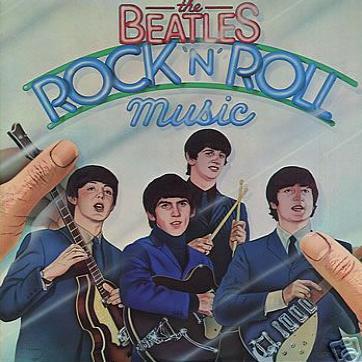 On June 7th, 1976, Capitol put out a double-album compilation titled “Rock 'n' Roll Music” which was meant to be a companion piece to the official “Red Album” and “Blue Album” compilation sets released back in 1973. The focus of this new release was The Beatles “rockers,” the soundtrack album rendition of “Get Back” being included here as the final track of side two, thus concluding the LP set. George Martin was consulted in regards to the preparation of this album and, with access to only the Capitol mixes, decided it was necessary to reverse the right and left channels of the original Phil Spector stereo mix for this release. Then, on October 27th, 1980, Capitol divided both albums in this set and re-released them individually, “Rock 'n' Roll Music: Volume 2” containing "Get Back." On June 7th, 1976, Capitol put out a double-album compilation titled “Rock 'n' Roll Music” which was meant to be a companion piece to the official “Red Album” and “Blue Album” compilation sets released back in 1973. The focus of this new release was The Beatles “rockers,” the soundtrack album rendition of “Get Back” being included here as the final track of side two, thus concluding the LP set. George Martin was consulted in regards to the preparation of this album and, with access to only the Capitol mixes, decided it was necessary to reverse the right and left channels of the original Phil Spector stereo mix for this release. Then, on October 27th, 1980, Capitol divided both albums in this set and re-released them individually, “Rock 'n' Roll Music: Volume 2” containing "Get Back."
 On March 22nd, 1982, Capitol once again included the song on a compilation album, this one corresponding with the re-release of their first movie “A Hard Day's Night” in movie theaters. The album was entitled “Reel Music,” which featured the predominant tracks from all of The Beatles’ movie releases. In this instance, the soundtrack album version of "Get Back" was included. The album was quite successful, peaking at #19 on the US Billboard album chart and certified gold by selling over 500,000 units. Over 12,000 promotional copies were also printed, these being on translucent gold vinyl. In promotion of this album, they released a composite single on this date entitled “The Beatles Movie Medley,” which featured snippets of seven songs featured on the accompanying album, “Get Back” being one of the seven. On March 22nd, 1982, Capitol once again included the song on a compilation album, this one corresponding with the re-release of their first movie “A Hard Day's Night” in movie theaters. The album was entitled “Reel Music,” which featured the predominant tracks from all of The Beatles’ movie releases. In this instance, the soundtrack album version of "Get Back" was included. The album was quite successful, peaking at #19 on the US Billboard album chart and certified gold by selling over 500,000 units. Over 12,000 promotional copies were also printed, these being on translucent gold vinyl. In promotion of this album, they released a composite single on this date entitled “The Beatles Movie Medley,” which featured snippets of seven songs featured on the accompanying album, “Get Back” being one of the seven.
 On October 11th, 1982, Capitol decided to condense multiple highlights of the Beatles catalog to one definitive album, thus releasing “20 Greatest Hits.” With the established success of the “Get Back” single, this rendition was included on both the US and UK editions of the album. With the MTV era in full swing, however, this collection of chart-busting classics only managed a #50 peak on the US Billboard album chart, America being too fixated on Duran Duran and The Stray Cats (among others) at the time. On October 11th, 1982, Capitol decided to condense multiple highlights of the Beatles catalog to one definitive album, thus releasing “20 Greatest Hits.” With the established success of the “Get Back” single, this rendition was included on both the US and UK editions of the album. With the MTV era in full swing, however, this collection of chart-busting classics only managed a #50 peak on the US Billboard album chart, America being too fixated on Duran Duran and The Stray Cats (among others) at the time.
 On December 6th, 1982, a new vinyl box set was released worldwide entitled "The Beatles Singles Collection," which contained all of their singles as they appeared in Britain up to that time. Since the "Get Back / Don't Let Me Down" single was a mono release in the UK unlike the US stereo 45, this was the first occasion that the mono versions of these two songs were made available in the US. This box set also contained the above mentioned "Beatles Movie Medley" since it was considered an official Beatles single at the time. When this box set was reissued as "The Beatles CD Singles Collection" on November 11th, 1992 and as the vinyl "The Singles Collection" on November 22nd, 2019, they also contained the mono single of "Get Back / Don't Let Me Down," while the "Beatles Movie Medley" was dropped from both of these reissues. On December 6th, 1982, a new vinyl box set was released worldwide entitled "The Beatles Singles Collection," which contained all of their singles as they appeared in Britain up to that time. Since the "Get Back / Don't Let Me Down" single was a mono release in the UK unlike the US stereo 45, this was the first occasion that the mono versions of these two songs were made available in the US. This box set also contained the above mentioned "Beatles Movie Medley" since it was considered an official Beatles single at the time. When this box set was reissued as "The Beatles CD Singles Collection" on November 11th, 1992 and as the vinyl "The Singles Collection" on November 22nd, 2019, they also contained the mono single of "Get Back / Don't Let Me Down," while the "Beatles Movie Medley" was dropped from both of these reissues.
 In November of 1986, the “Let It Be” soundtrack was also made available as an “Original Master Recording” release from Mobile Fidelity Sound Lab. This company's practice was to create a new master utilizing half-speed mastering technology from the original master tapes, here utilizing what was referred to therein as a “corrected copy tape.” This version of the album was released in both a single sleeve and gatefold cover, the single sleeve cover being the rarest. In November of 1986, the “Let It Be” soundtrack was also made available as an “Original Master Recording” release from Mobile Fidelity Sound Lab. This company's practice was to create a new master utilizing half-speed mastering technology from the original master tapes, here utilizing what was referred to therein as a “corrected copy tape.” This version of the album was released in both a single sleeve and gatefold cover, the single sleeve cover being the rarest.
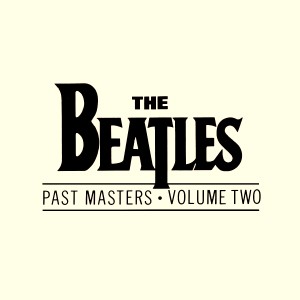 On March 7th, 1988, the CD “Past Masters, Volume Two” was released, which contained all of the later Beatles tracks that were not contained on British albums, the single version of “Get Back” being among them. For vinyl, it was decided to combine both volumes of "Past Masters" to form a vinyl double-album, this coming out on October 24th, 1988. Both volumes were combined as well for remastered re-releases, the 2-CD set coming out on September 9th, 2009 and the vinyl double-album released on November 12th, 2012. On March 7th, 1988, the CD “Past Masters, Volume Two” was released, which contained all of the later Beatles tracks that were not contained on British albums, the single version of “Get Back” being among them. For vinyl, it was decided to combine both volumes of "Past Masters" to form a vinyl double-album, this coming out on October 24th, 1988. Both volumes were combined as well for remastered re-releases, the 2-CD set coming out on September 9th, 2009 and the vinyl double-album released on November 12th, 2012.
 The next release of “Get Back” was October 18th, 1996, this being on the compilation album “Anthology 3.” The legendary final rooftop performance of “Get Back,” the final song The Beatles ever performed live, was featured here, complete with evidence of John and George's amps being turned off by Mal Evans per police instructions as well as McCartney's mutterings about the group getting “arrested.” This album went 3x Platiunum and was the third double-album in a row from The Beatles that made it to #1 on the Billboard album chart. The next release of “Get Back” was October 18th, 1996, this being on the compilation album “Anthology 3.” The legendary final rooftop performance of “Get Back,” the final song The Beatles ever performed live, was featured here, complete with evidence of John and George's amps being turned off by Mal Evans per police instructions as well as McCartney's mutterings about the group getting “arrested.” This album went 3x Platiunum and was the third double-album in a row from The Beatles that made it to #1 on the Billboard album chart.
 With the “20 Greatest Hits” album long out of print, Apple Records did this concept one better by releasing “Beatles 1,” containing every Beatles song that topped the charts in either Britain or America all on a single disc, the hit single version of “Get Back” being one of them. This came out on November 13th, 2000, this new release being accepted much better than its predecessor, topping the US Billboard album chart and eventually selling over 31 million copies worldwide. A later remastered version of the CD was released in September of 2011, while a newly re-mixed version was released on November 6th, 2015. With the “20 Greatest Hits” album long out of print, Apple Records did this concept one better by releasing “Beatles 1,” containing every Beatles song that topped the charts in either Britain or America all on a single disc, the hit single version of “Get Back” being one of them. This came out on November 13th, 2000, this new release being accepted much better than its predecessor, topping the US Billboard album chart and eventually selling over 31 million copies worldwide. A later remastered version of the CD was released in September of 2011, while a newly re-mixed version was released on November 6th, 2015.
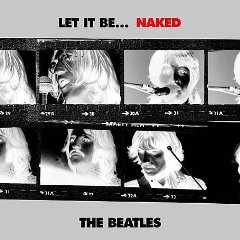 November 17th, 2003 was the release date for “Let It Be...Naked” that was put together, at Paul McCartney's insistence, to recreate the original “as nature intended” format of the “Get Back / Let It Be” project. As detailed above, the January 27th, 1969 performance that graced both the original single and album versions of the song “Get Back” was included here, the omission of the coda intact. This excellent new mix was the opening track of this new album, which peaked at #5 on the US Billboard album chart and has been viewed by many as the definitive version of these Beatles' sessions. November 17th, 2003 was the release date for “Let It Be...Naked” that was put together, at Paul McCartney's insistence, to recreate the original “as nature intended” format of the “Get Back / Let It Be” project. As detailed above, the January 27th, 1969 performance that graced both the original single and album versions of the song “Get Back” was included here, the omission of the coda intact. This excellent new mix was the opening track of this new album, which peaked at #5 on the US Billboard album chart and has been viewed by many as the definitive version of these Beatles' sessions.
 Not to be forgotten is the excellent mix of “Get Back” that appears on the November 20th, 2006 released LP “Love,” the innovative soundtrack used with the Cirque du Soleil program of the same name. As detailed above, this mix combines original sounds from various Beatles songs to concoct a composite track that abbreviates the original performance of "Get Back" but becomes the opening highlight to the entire project. This advenurous album peaked at #4 on the US Billboard album chart and ended up going 2x Platinum. Not to be forgotten is the excellent mix of “Get Back” that appears on the November 20th, 2006 released LP “Love,” the innovative soundtrack used with the Cirque du Soleil program of the same name. As detailed above, this mix combines original sounds from various Beatles songs to concoct a composite track that abbreviates the original performance of "Get Back" but becomes the opening highlight to the entire project. This advenurous album peaked at #4 on the US Billboard album chart and ended up going 2x Platinum.
 September 9th, 2009 was the release date for the CD box set "The Beatles In Mono," which included the mono mix of "Get Back" on a disc entitled "Mono Masters." While this original UK mono mix from the British single was only available on the various "Singles Collection" box sets in America, this release made it more accessable to American Beatles fans. The vinyl edition of this box set was first released on September 9th, 2014. September 9th, 2009 was the release date for the CD box set "The Beatles In Mono," which included the mono mix of "Get Back" on a disc entitled "Mono Masters." While this original UK mono mix from the British single was only available on the various "Singles Collection" box sets in America, this release made it more accessable to American Beatles fans. The vinyl edition of this box set was first released on September 9th, 2014.
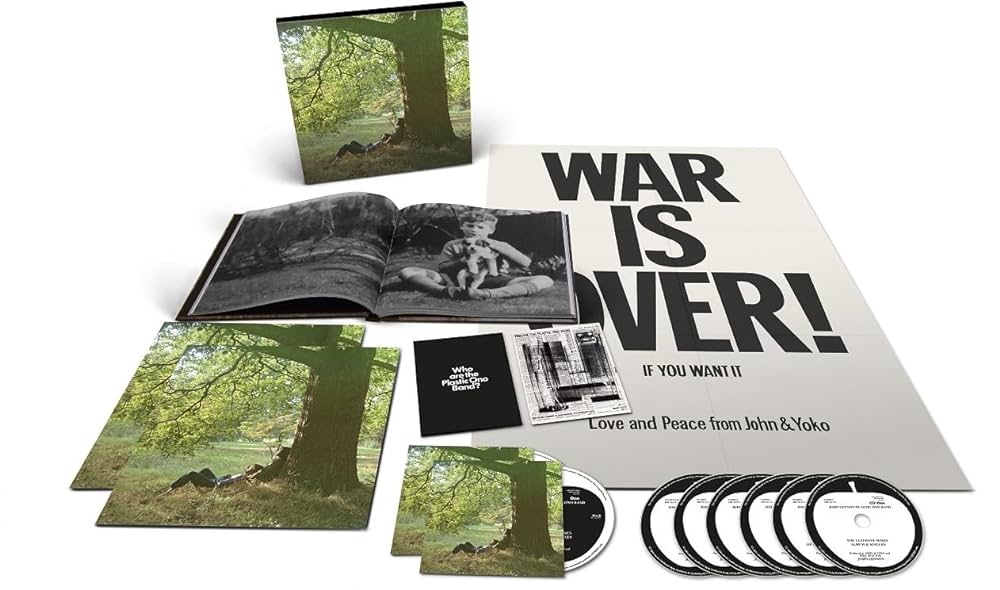 Also of note is the ad-libbed version of "Get Back (Jam)" from John with Ringo and Klaus Voormann on September 27th, 1970 (detailed above) that has been featured in the 50th Anniversary reissued box set titled "John Lennon/Plastic Ono Band: The Ultimate Collection" released on April 23rd, 2021. This is an eight-disc box set that comprises six CDs as well as two HD Blu-ray discs featuring 159 tracks of new mixes, previously unreleased demos, studio outtakes and isolated track elements, along with 5.1 surround and Dolby Atmos mixes. Also of note is the ad-libbed version of "Get Back (Jam)" from John with Ringo and Klaus Voormann on September 27th, 1970 (detailed above) that has been featured in the 50th Anniversary reissued box set titled "John Lennon/Plastic Ono Band: The Ultimate Collection" released on April 23rd, 2021. This is an eight-disc box set that comprises six CDs as well as two HD Blu-ray discs featuring 159 tracks of new mixes, previously unreleased demos, studio outtakes and isolated track elements, along with 5.1 surround and Dolby Atmos mixes.
 On October 15th, 2021, various new editions of the "Let It Be" LP were released that included interesting versions of "Get Back." The "Deluxe" 2CD set features the newly remixed Giles Martin version of the song as contained on the original "Let It Be" album as well as "take eight" as they recorded on January 27th, 1969. Both the "Super Deluxe" 5CD + Blu-ray edition and the "Super Deluxe" 4LP + 1 12" EP edition also contain the Giles Martin remix of the single version of "Get Back" within the context of its appearance on the aborted 1969 "Get Back" album, as well as the complete "take 18" of the song recorded on January 28th, 1969 from which the latter part of the released single was constructed. Not to be forgotten is the appearance of "Get Back Reprise" from the 1969 "Get Back" album, which also makes an appearance on these "Super Deluxe" editions. On October 15th, 2021, various new editions of the "Let It Be" LP were released that included interesting versions of "Get Back." The "Deluxe" 2CD set features the newly remixed Giles Martin version of the song as contained on the original "Let It Be" album as well as "take eight" as they recorded on January 27th, 1969. Both the "Super Deluxe" 5CD + Blu-ray edition and the "Super Deluxe" 4LP + 1 12" EP edition also contain the Giles Martin remix of the single version of "Get Back" within the context of its appearance on the aborted 1969 "Get Back" album, as well as the complete "take 18" of the song recorded on January 28th, 1969 from which the latter part of the released single was constructed. Not to be forgotten is the appearance of "Get Back Reprise" from the 1969 "Get Back" album, which also makes an appearance on these "Super Deluxe" editions.
 A 50th Anniversay edition of "The Beatles / 1967 - 1970" (aka "The Blue Album") was released on November 10th, 2023, the Giles Martin stereo mix of the single version of "Get Back being included. This newly expanded compilation set featured 12 additional songs for a total of 38 tracks, and was made available as a double CD and as a triple vinyl release on both black and blue vinyl. A 50th Anniversay edition of "The Beatles / 1967 - 1970" (aka "The Blue Album") was released on November 10th, 2023, the Giles Martin stereo mix of the single version of "Get Back being included. This newly expanded compilation set featured 12 additional songs for a total of 38 tracks, and was made available as a double CD and as a triple vinyl release on both black and blue vinyl.
 On November 21st, 2025, "Anthology 4" was released on both CD and vinyl, this album also being made available within the "Anthology Collection" box set on CD and on vinyl. "Take eight" of "Get Back" as recorded at Abbey Road Studios on January 27th, 1969 was also included on this new release as it had been in some 2021 editions of the "Let It Be" album. On November 21st, 2025, "Anthology 4" was released on both CD and vinyl, this album also being made available within the "Anthology Collection" box set on CD and on vinyl. "Take eight" of "Get Back" as recorded at Abbey Road Studios on January 27th, 1969 was also included on this new release as it had been in some 2021 editions of the "Let It Be" album.
 As for Paul McCartney's live recordings of “Get Back,” the first was the "Recorded Highlights Of The Prince's Trust 10th Anniversary Birthday Party," which released in 1987 and included Paul's live rendition with Tina Turner, Elton John and many others as detailed above. Then came the November 5th, 1990 released double-LP “Tripping The Live Fantastic,” this live rendition also appearing on the simultaneously released condensed disc entitled “Tripping The Live Fantastic: Highlights!” A new live rendition of the song appears on the album “Good Evening New York City,” which was released on November 17th, 2009. A 2007 recorded live version of the song eventually was included on the July 12th, 2019 live album “Amoeba Gig,” this rendition being recorded in Hollywood, California. As for Paul McCartney's live recordings of “Get Back,” the first was the "Recorded Highlights Of The Prince's Trust 10th Anniversary Birthday Party," which released in 1987 and included Paul's live rendition with Tina Turner, Elton John and many others as detailed above. Then came the November 5th, 1990 released double-LP “Tripping The Live Fantastic,” this live rendition also appearing on the simultaneously released condensed disc entitled “Tripping The Live Fantastic: Highlights!” A new live rendition of the song appears on the album “Good Evening New York City,” which was released on November 17th, 2009. A 2007 recorded live version of the song eventually was included on the July 12th, 2019 live album “Amoeba Gig,” this rendition being recorded in Hollywood, California.
Live Performances
 “Get Back” had the privilege of becoming the last song that The Beatles ever performed during a live concert, this being on the rooftop of their Apple Headquarters during the afternoon of January 30th, 1969. "Trying to hoof Billy Preston's Fender Rhodes Seventy-Three keyboard and his Fender Twin Reverb amp up there was just not going to happen under those conditions," Ken Mansfield explained in his first-account book "The Roof: The Beatles' Final Concert." "Billy's stuff simply wouldn't fit around a bend in the staircase or through the door. So in order to get the Fender Rhodes topside, staffers had to hoist it through a skylight that had to be completely disassembled and then put back together afterward." “Get Back” had the privilege of becoming the last song that The Beatles ever performed during a live concert, this being on the rooftop of their Apple Headquarters during the afternoon of January 30th, 1969. "Trying to hoof Billy Preston's Fender Rhodes Seventy-Three keyboard and his Fender Twin Reverb amp up there was just not going to happen under those conditions," Ken Mansfield explained in his first-account book "The Roof: The Beatles' Final Concert." "Billy's stuff simply wouldn't fit around a bend in the staircase or through the door. So in order to get the Fender Rhodes topside, staffers had to hoist it through a skylight that had to be completely disassembled and then put back together afterward."
 This was an unannounced concert during London's “long cold lonely winter” of 1969, which was immortalized by George Harrison in his popular hit song “Here Comes The Sun.” With the low temperature causing Ringo to struggle with a runny nose and prompting John Lennon to borrow Yoko's fur coat, this show lasted 42 minutes and “brought part of the capital to a standstill,” as stipulated by author Mark Lewisohn in his 1992 book “The Complete Beatles Chronicle.” This was an unannounced concert during London's “long cold lonely winter” of 1969, which was immortalized by George Harrison in his popular hit song “Here Comes The Sun.” With the low temperature causing Ringo to struggle with a runny nose and prompting John Lennon to borrow Yoko's fur coat, this show lasted 42 minutes and “brought part of the capital to a standstill,” as stipulated by author Mark Lewisohn in his 1992 book “The Complete Beatles Chronicle.”
 As detailed above, “Get Back” was touched on five times, two quick partial performances and three full versions. “Get Back” was the first song to be played in its entirety on this occasion, this being followed by a second full rendition of the song with the intention of perfecting it for both the film crew and the audio production team. Their third rendition of the song on this day ended up as the last song of the entire show, the other four songs that they had planned on playing having already been performed to their satisfaction. They were on a roll, having too much fun to pack it up, and therefore tried once again to perfect “Get Back.” As detailed above, “Get Back” was touched on five times, two quick partial performances and three full versions. “Get Back” was the first song to be played in its entirety on this occasion, this being followed by a second full rendition of the song with the intention of perfecting it for both the film crew and the audio production team. Their third rendition of the song on this day ended up as the last song of the entire show, the other four songs that they had planned on playing having already been performed to their satisfaction. They were on a roll, having too much fun to pack it up, and therefore tried once again to perfect “Get Back.”
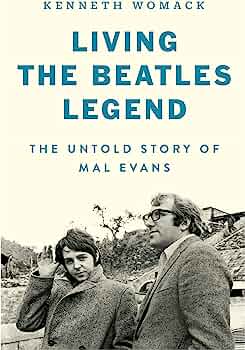 By this time, however, the local police had already entered the Apple building and made it up onto the roof with the intention of calling the concert to a halt. They had received numerous complaints about the show disturbing the peace, so they proceeded to instruct assistant Mal Evans to shut off the band's amplifiers. After the amps were turned back on quickly thereafter, they proceeded to complete the song with the understanding that they better end it there or else be taken into custody. Had that not occurred, who's to say if The Beatles would have continued the performance and what they might have played. Nonetheless, acknowledging that the show was over, Lennon quipped to those nearby about being grateful that his group had “passed the audition” and they promptly exited the rooftop, leaving the lugging of their equipment to Mal Evans and others. By this time, however, the local police had already entered the Apple building and made it up onto the roof with the intention of calling the concert to a halt. They had received numerous complaints about the show disturbing the peace, so they proceeded to instruct assistant Mal Evans to shut off the band's amplifiers. After the amps were turned back on quickly thereafter, they proceeded to complete the song with the understanding that they better end it there or else be taken into custody. Had that not occurred, who's to say if The Beatles would have continued the performance and what they might have played. Nonetheless, acknowledging that the show was over, Lennon quipped to those nearby about being grateful that his group had “passed the audition” and they promptly exited the rooftop, leaving the lugging of their equipment to Mal Evans and others.
 In order to promote “Get Back” when their 45 came out in the spring of 1969, filmed footage from this rooftop show was synchronized with the studio version that appeared on the single. This promo film was shown in Britain on four episodes of the popular music TV show “Top Of The Pops,” while it was shown only once in America on the April 30th, 1969 installment of “The Glen Campbell Goodtime Hour,” which was five days prior to this single's availability in US record shops. In order to promote “Get Back” when their 45 came out in the spring of 1969, filmed footage from this rooftop show was synchronized with the studio version that appeared on the single. This promo film was shown in Britain on four episodes of the popular music TV show “Top Of The Pops,” while it was shown only once in America on the April 30th, 1969 installment of “The Glen Campbell Goodtime Hour,” which was five days prior to this single's availability in US record shops.
 When the “Let It Be” movie was released on May 13th, 1970, it included two full versions of “Get Back” from the rooftop concert, the first being a composite edit of the first two live performances of the song, complete with John's dedicating the song to “Daisy, Morris and Tommy” after it ended. This footage shows how rickety their "stage" set up was on the rooftop, the floorboards under George Harrison bowing whenever he happened to shift his feet. When the “Let It Be” movie was released on May 13th, 1970, it included two full versions of “Get Back” from the rooftop concert, the first being a composite edit of the first two live performances of the song, complete with John's dedicating the song to “Daisy, Morris and Tommy” after it ended. This footage shows how rickety their "stage" set up was on the rooftop, the floorboards under George Harrison bowing whenever he happened to shift his feet.
 Their second rendition of "Get Back" featured in the "Let It Be" film was the final version that featured the police on the roof. This footage reveals that the police had already arrived on the rooftop before the final “Get Back” performance had begun, Paul smiling in wonder as to whether the band should actually go ahead and play it. Nonetheless, Lennon counted it off and they go through with it anyway. Mal Evans is seen trying to interrupt John and George, telling them the that the police want them to stop. Mal Evans turns both guitarists amplifiers off but George is seen here turning his back on, Mal Evans relenting and turning Lennon's back on as well. Mal Evans is then shown trying to pacify the policemen as the song continues on, assuring them that this was indeed the last song that they would play. The Beatles with Billy Preston played with much enthusiasm, knowing that this was the final song of the concert. Mal Evans is then shown assuring the officers that The Beatles, the most popular musical artists in the world at the time, would be finishing their performance in the next couple of minutes, this satisfying them enough to exit the roof. After the song was completed, The Beatles are then seen proceeding to set down their instruments to make their exit, McCartney thanking Maureen for her cheers and John giving his final “passed the audition” announcement. Their second rendition of "Get Back" featured in the "Let It Be" film was the final version that featured the police on the roof. This footage reveals that the police had already arrived on the rooftop before the final “Get Back” performance had begun, Paul smiling in wonder as to whether the band should actually go ahead and play it. Nonetheless, Lennon counted it off and they go through with it anyway. Mal Evans is seen trying to interrupt John and George, telling them the that the police want them to stop. Mal Evans turns both guitarists amplifiers off but George is seen here turning his back on, Mal Evans relenting and turning Lennon's back on as well. Mal Evans is then shown trying to pacify the policemen as the song continues on, assuring them that this was indeed the last song that they would play. The Beatles with Billy Preston played with much enthusiasm, knowing that this was the final song of the concert. Mal Evans is then shown assuring the officers that The Beatles, the most popular musical artists in the world at the time, would be finishing their performance in the next couple of minutes, this satisfying them enough to exit the roof. After the song was completed, The Beatles are then seen proceeding to set down their instruments to make their exit, McCartney thanking Maureen for her cheers and John giving his final “passed the audition” announcement.
 To end the film, the section of the coda from the studio recording of “Get Back” from January 28th, 1969 was heard as a backdrop to some credits and a still shot of the band about to exit the Apple roof. This exact audio was intended as the final “Get Back (reprise)” track on both of the proposed “Get Back” LPs, the film's closing moments quite likely being included to coincide with the soundtrack album's final track, although it ended up not being used. To end the film, the section of the coda from the studio recording of “Get Back” from January 28th, 1969 was heard as a backdrop to some credits and a still shot of the band about to exit the Apple roof. This exact audio was intended as the final “Get Back (reprise)” track on both of the proposed “Get Back” LPs, the film's closing moments quite likely being included to coincide with the soundtrack album's final track, although it ended up not being used.
On June 20th, 1986, Paul returned to the concert stage after nearly a six-and-a-half year absence to perform for the 1986 Prince's Trust Rock Gala at Wembley Area in London. McCartney chose to play acoustic guitar and sing "Get Back" with Tina Turner, Elton John and many others as part of the band of All-Stars present on stage at the conclusion of the performance.
 McCartney featured “Get Back” very prominently throughout his live solo career, his first inclusion of the song being during his “World Tour,” which stretched from July 26th, 1989 (London, England) to July 29th, 1990 (Chicago, Illinois). To promote his “Unplugged (The Official Bootleg)” album, Paul included “Get Back” in the “Electric Set” of his “Unplugged Tour 1991,” this tour beginning on May 8th (Barcelona, Spain) and ending on July 24th (Copenhagen, Denmark) of that year. On February 6th, 2005, Paul and his band performed “Get Back” and three other songs at Super Bowl XXXIX in Jacksonville, Florida. Paul's 2005 “US” tour featured “Get Back” as well, this tour stretching from September 15th (Miami, Florida) to November 30th (Los Angeles, California) of that year. On July 15th, 2009, Paul and his band appeared on the "Late Show With David Letterman" performing "Get Back" and three other songs on top of the famous Ed Sullivan Theater marquee. His “Summer Live '09” tour included this song as well, this beginning on July 17th (New York City, New York) and ending on August 19th (Arlington, Texas) of 2009. McCartney featured “Get Back” very prominently throughout his live solo career, his first inclusion of the song being during his “World Tour,” which stretched from July 26th, 1989 (London, England) to July 29th, 1990 (Chicago, Illinois). To promote his “Unplugged (The Official Bootleg)” album, Paul included “Get Back” in the “Electric Set” of his “Unplugged Tour 1991,” this tour beginning on May 8th (Barcelona, Spain) and ending on July 24th (Copenhagen, Denmark) of that year. On February 6th, 2005, Paul and his band performed “Get Back” and three other songs at Super Bowl XXXIX in Jacksonville, Florida. Paul's 2005 “US” tour featured “Get Back” as well, this tour stretching from September 15th (Miami, Florida) to November 30th (Los Angeles, California) of that year. On July 15th, 2009, Paul and his band appeared on the "Late Show With David Letterman" performing "Get Back" and three other songs on top of the famous Ed Sullivan Theater marquee. His “Summer Live '09” tour included this song as well, this beginning on July 17th (New York City, New York) and ending on August 19th (Arlington, Texas) of 2009.
 Paul's “Good Evening Europe Tour” also included "Get Back," this tour stretching from December 2nd (at the 02 World Hamburg Arena in Hamburg, Germany) to December 22nd (London, England) of 2009. Next came the “Up And Coming” tour, this beginning on March 28th, 2010 (Glendale, Arizona) and ending on June 10th, 2011 (Las Vegas, Nevada). His “On The Run” tour was next, stretching from July 15th, 2011 (New York City, New York) to November 29th, 2012 (Edmonton, Canada). Paul sometimes performed “Get Back” during his extensive “Out There” tour that began on May 4th, 2013 (Belo Horizonte, Brazil) and concluded on October 22nd, 2015 (Buffalo, New York). The song was sometimes an encore selection during his “One On One” tour, which stretched from April 13th, 2016 (Fresno, California) to December 16th, 2017 (Auckland, New Zealand). It is also quite understandable that "Get Back" would be included in Paul's "Got Back" tour, which ran from April 28th, 2022 (Spokane, Washington) to December 19th, 2024 (London, England). Paul's “Good Evening Europe Tour” also included "Get Back," this tour stretching from December 2nd (at the 02 World Hamburg Arena in Hamburg, Germany) to December 22nd (London, England) of 2009. Next came the “Up And Coming” tour, this beginning on March 28th, 2010 (Glendale, Arizona) and ending on June 10th, 2011 (Las Vegas, Nevada). His “On The Run” tour was next, stretching from July 15th, 2011 (New York City, New York) to November 29th, 2012 (Edmonton, Canada). Paul sometimes performed “Get Back” during his extensive “Out There” tour that began on May 4th, 2013 (Belo Horizonte, Brazil) and concluded on October 22nd, 2015 (Buffalo, New York). The song was sometimes an encore selection during his “One On One” tour, which stretched from April 13th, 2016 (Fresno, California) to December 16th, 2017 (Auckland, New Zealand). It is also quite understandable that "Get Back" would be included in Paul's "Got Back" tour, which ran from April 28th, 2022 (Spokane, Washington) to December 19th, 2024 (London, England).
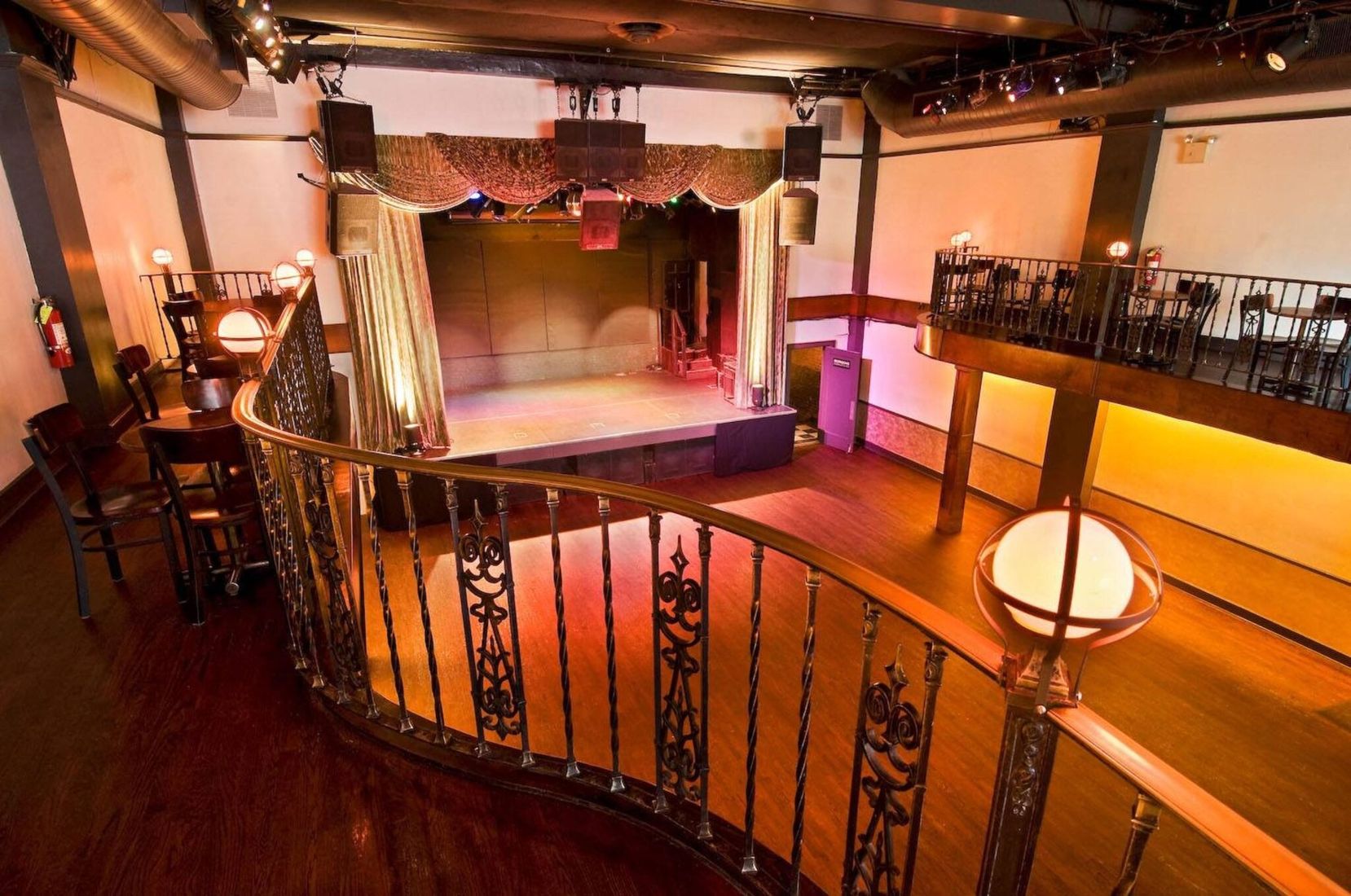 Interestingly, Paul and his band performed a surprise three night residency at Bowery Ballroom in New York City on February 11th, 12th and 14th, 2025, the last night being Valentine's Day. They performed "Get Back" for each of these concerts at this quaint 575-capacity Manhattan venue. Interestingly, Paul and his band performed a surprise three night residency at Bowery Ballroom in New York City on February 11th, 12th and 14th, 2025, the last night being Valentine's Day. They performed "Get Back" for each of these concerts at this quaint 575-capacity Manhattan venue.
Conclusion
 “This old image thing that people are always on about with The Beatles, well, the image is something in Joe Public's eye,” John stated in the spring of 1969. “That's why it's a drag when people talk about fresh faced Beatles like it was five years ago. I mean, we're always changing.” “This old image thing that people are always on about with The Beatles, well, the image is something in Joe Public's eye,” John stated in the spring of 1969. “That's why it's a drag when people talk about fresh faced Beatles like it was five years ago. I mean, we're always changing.”
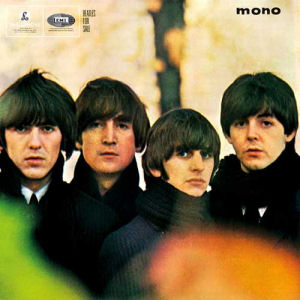 And change they did, not only in appearance, but musically. The band's evolution from “mop tops” who produced creatively composed pop songs to mustached innovators creating psychedelic studio masterpieces in 1967 with orchestras and Indian instrumentalists, only to reinvent themselves once again on the “White Album” with a minimalistic approach, was striking. Then, with the “Get Back / Let It Be” project, the group scaled it back even further by omiting utilizing overdubs and double-tracking altogether. The eventually released “Let It Be” album is testimony to them backing off on this determination to a certain degree, but when the first fruits of their labor was released to the public, this being the song “Get Back” as a single, their original intention was fulfilled. And change they did, not only in appearance, but musically. The band's evolution from “mop tops” who produced creatively composed pop songs to mustached innovators creating psychedelic studio masterpieces in 1967 with orchestras and Indian instrumentalists, only to reinvent themselves once again on the “White Album” with a minimalistic approach, was striking. Then, with the “Get Back / Let It Be” project, the group scaled it back even further by omiting utilizing overdubs and double-tracking altogether. The eventually released “Let It Be” album is testimony to them backing off on this determination to a certain degree, but when the first fruits of their labor was released to the public, this being the song “Get Back” as a single, their original intention was fulfilled.
 This 2x Platinum-selling hit single (over four million copies sold in the US alone) featured five musicians performing without any overdubs or double-tracking whatsoever, the only production manipulation being the editing of two live performances pieced together. “She Love You” appears to hae been the last time that a Beatles single did not contain any overdubs or double-tracking, although an edit was involved here as well. For all intents and purposes, The Beatles did in fact “get back” to their origins of being a true rock'n'roll band. “Get Back” was indeed “the first Beatles record which is as live at it can be in this electronic age,” as its promotional ad insisted that it was. And “John is playing the fab live guitar solo,” as Lennon insisted in the ad as well! This 2x Platinum-selling hit single (over four million copies sold in the US alone) featured five musicians performing without any overdubs or double-tracking whatsoever, the only production manipulation being the editing of two live performances pieced together. “She Love You” appears to hae been the last time that a Beatles single did not contain any overdubs or double-tracking, although an edit was involved here as well. For all intents and purposes, The Beatles did in fact “get back” to their origins of being a true rock'n'roll band. “Get Back” was indeed “the first Beatles record which is as live at it can be in this electronic age,” as its promotional ad insisted that it was. And “John is playing the fab live guitar solo,” as Lennon insisted in the ad as well!
Song Summary
“Get Back”
Written by: John Lennon / Paul McCartney
Song Written: January, 7 through 28, 1969
Song Recorded: January 27 and 28, 1969
First US Release: Date: May 5, 1969
US Single Release: Apple #2490
Highest Chart Position: #1 (5 weeks)
First US Album Release: Apple #AR-34001 “Let It Be”
British Album Release: Apple #PCS 7096 “Let It Be”
Length: 3:11
Key: A major
Producer: George Martin (?), Glyn Johns (?) Engineers: Glyn Johns, Alan Parsons
Instrumentation (most likely):
Paul McCartney - Lead Vocals, Bass (1963 Hofner 500/1)
John Lennon - Lead and Rhythm Guitar (1965 Epiphone ES-230TD Casino), harmony vocals
George Harrison - Rhythm Guitar (1968 Fender Rosewood Telecaster)
Ringo Starr - Drums (1968 Ludwig Hollywood Maple)
Billy Preston - Electric Piano (1968 Fender Rhodes Seventy-Three Sparkle Top)
Written and compiled by Dave Rybaczewski
|
IF YOU WOULD LIKE TO MAKE A DONATION TO KEEP THIS WEBSITE UP AND RUNNING, PLEASE CLICK BELOW!
Sign Up Below for our MONTHLY BEATLES TRIVIA QUIZ!
|